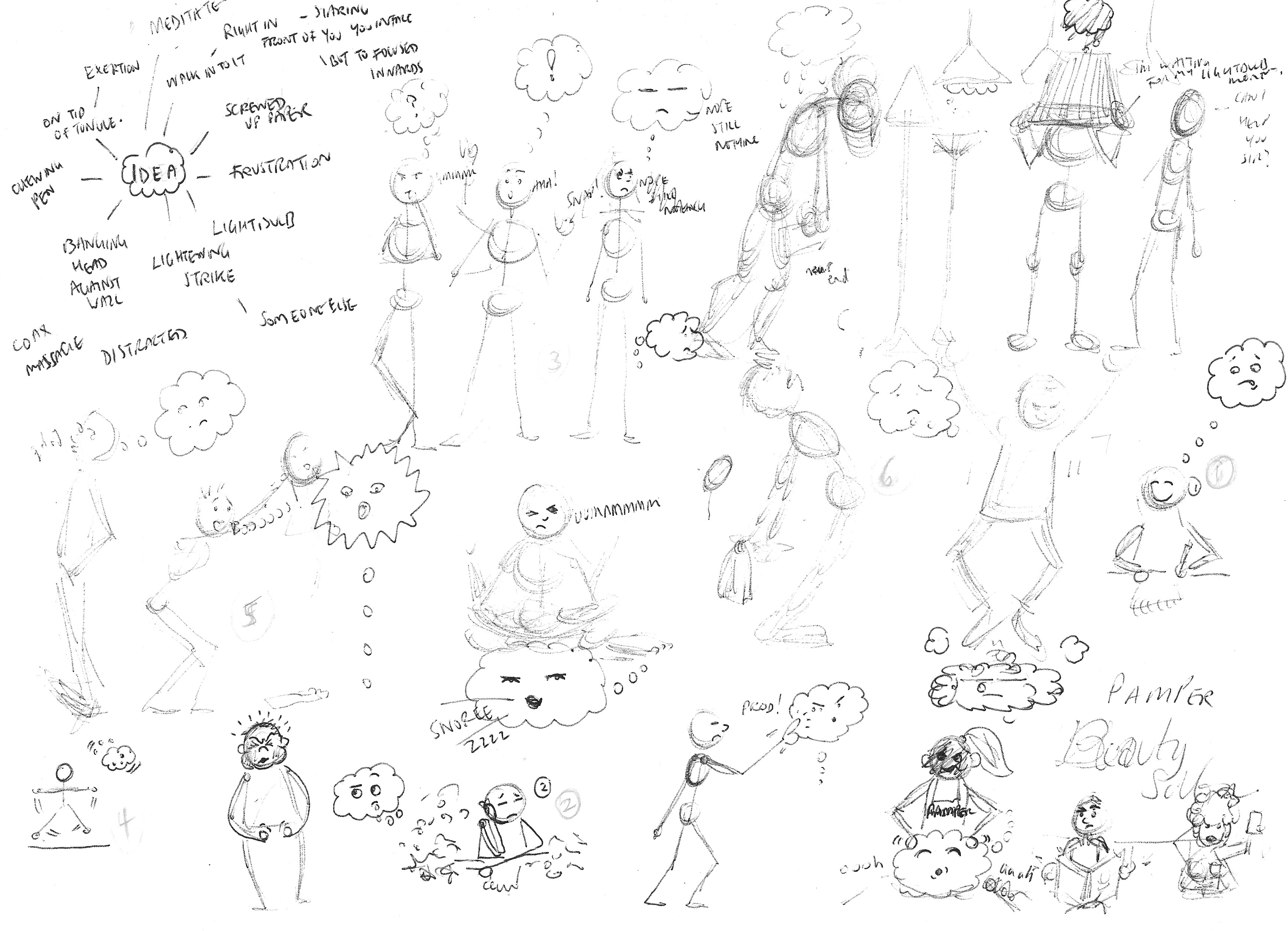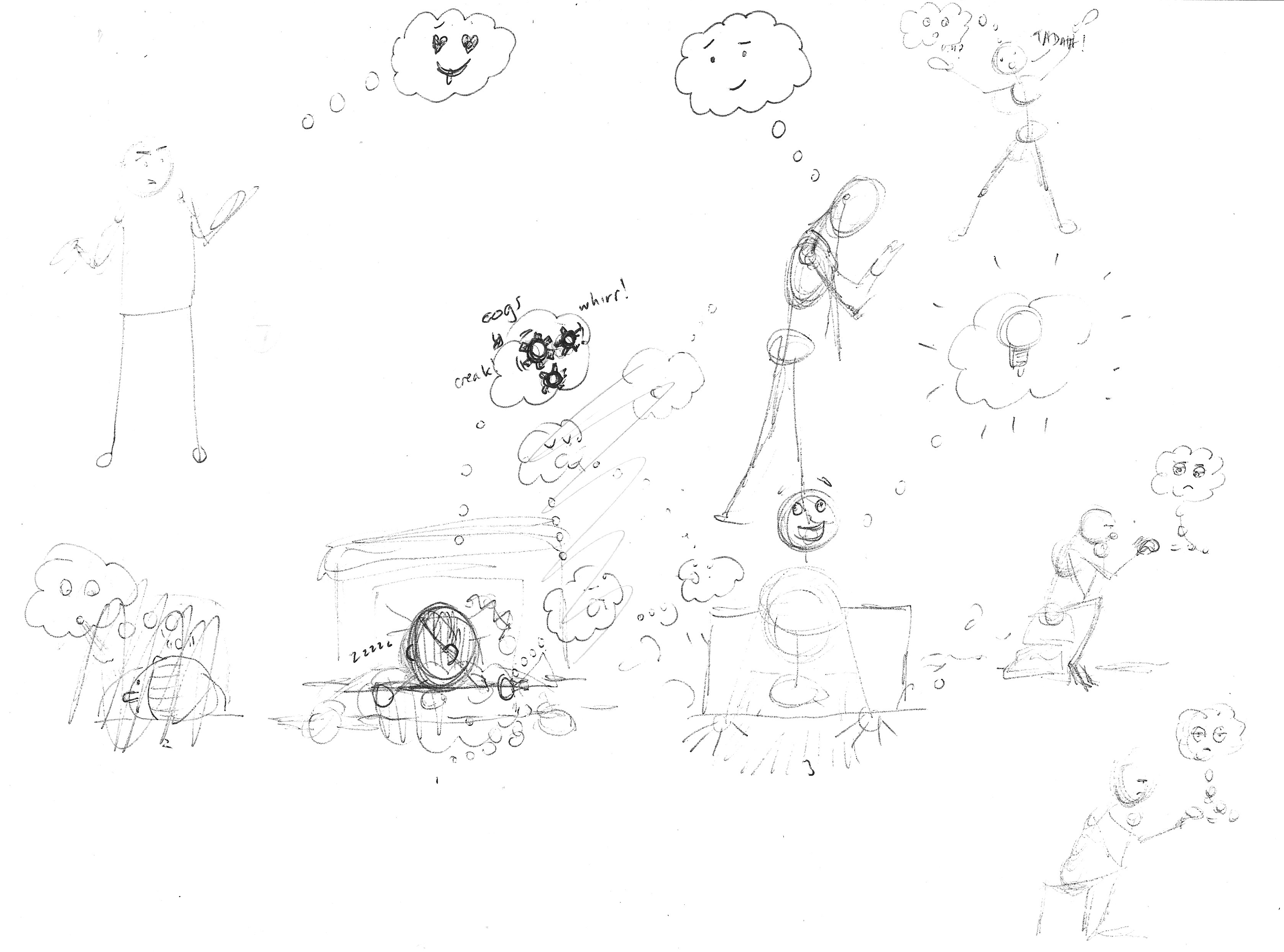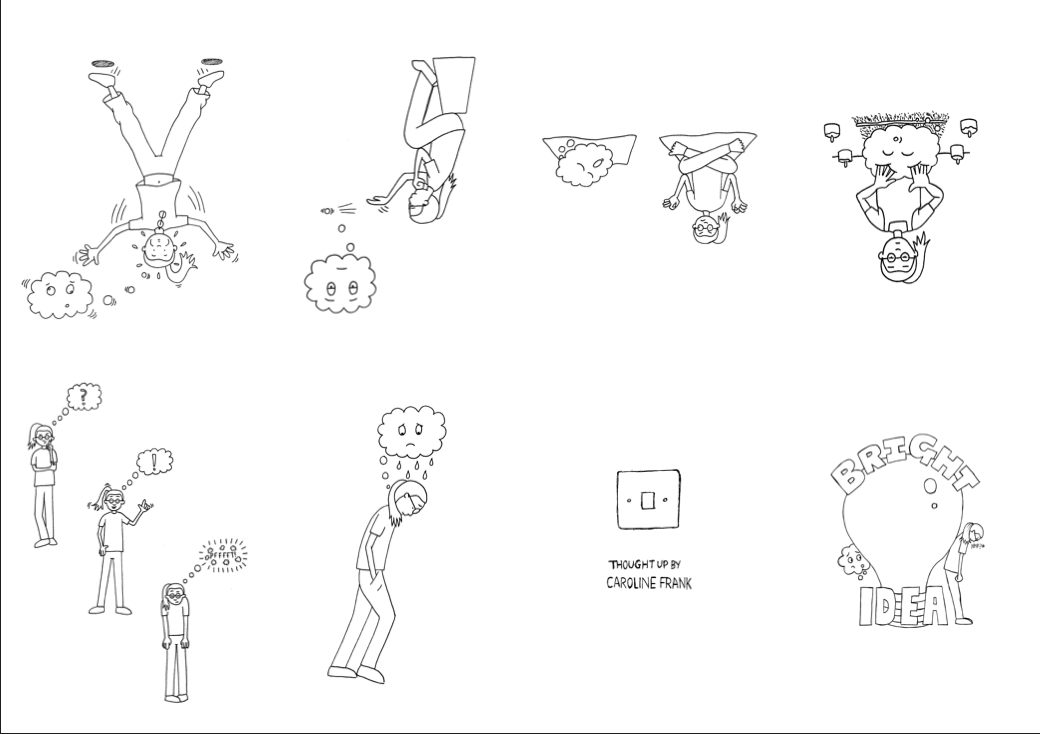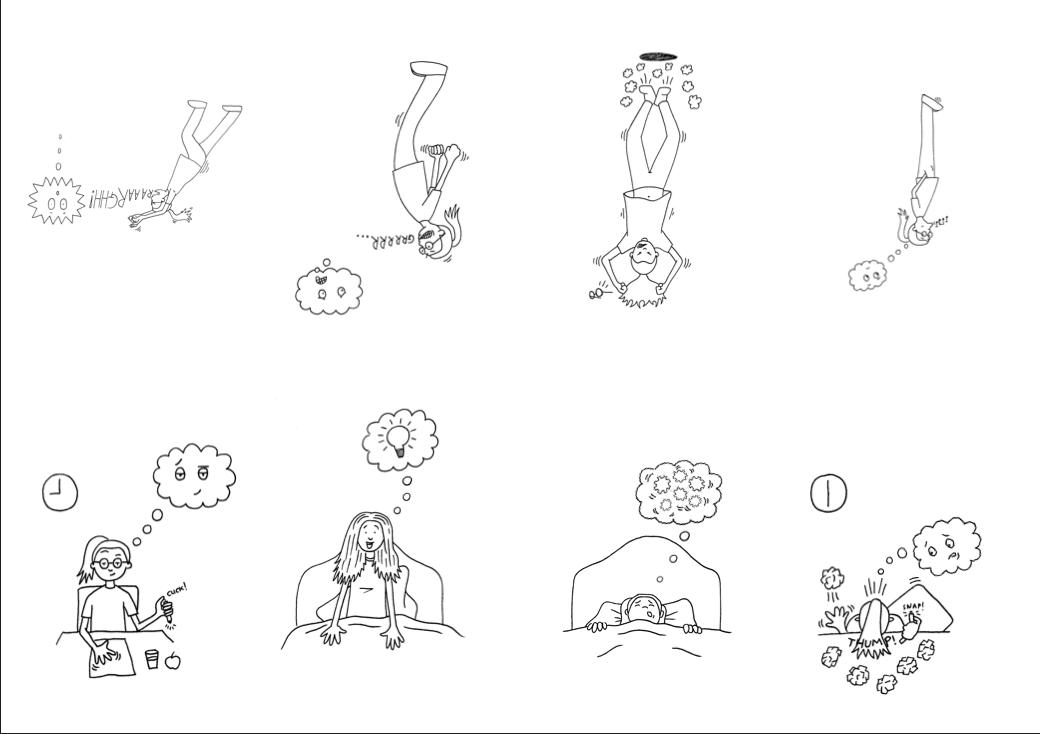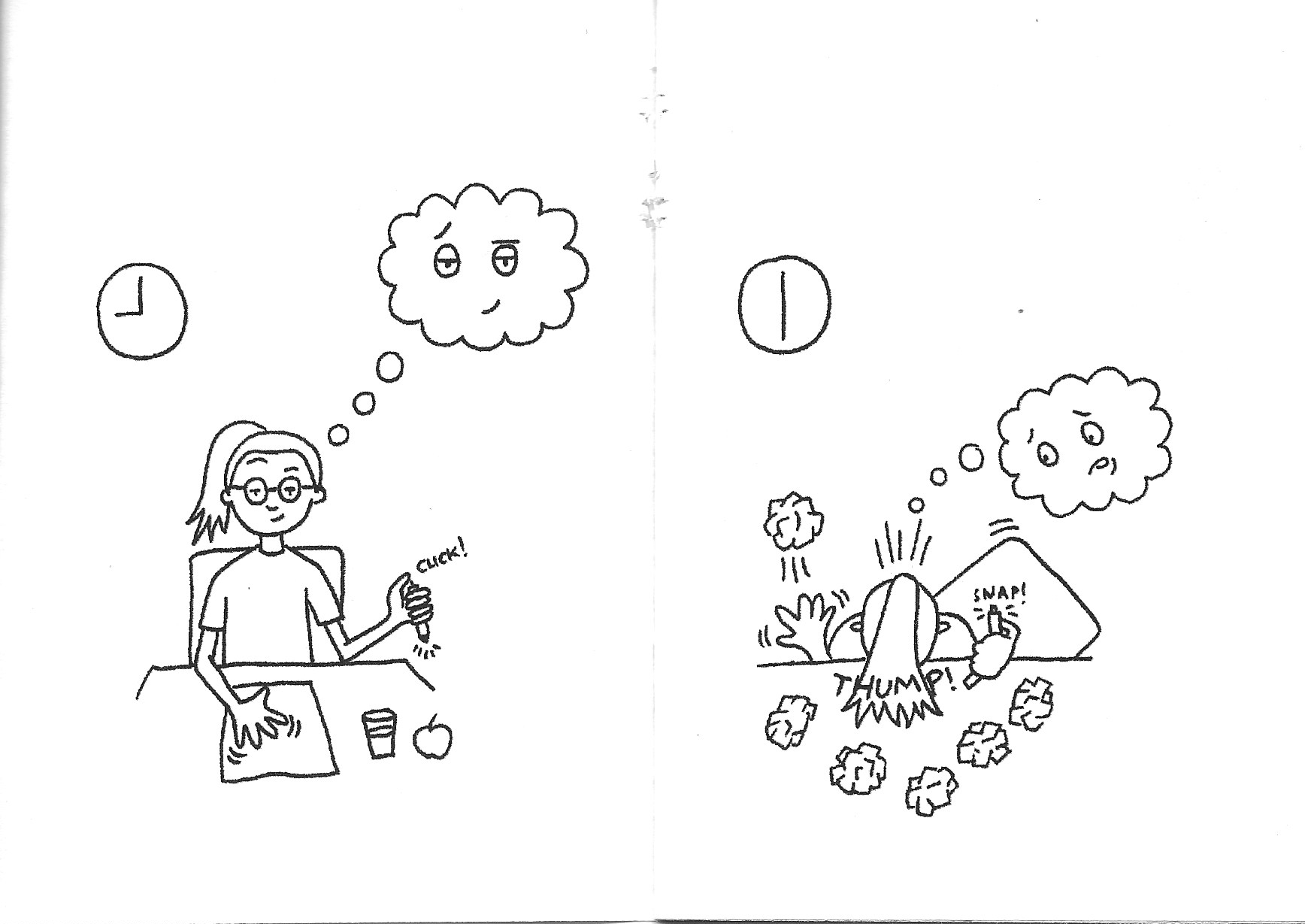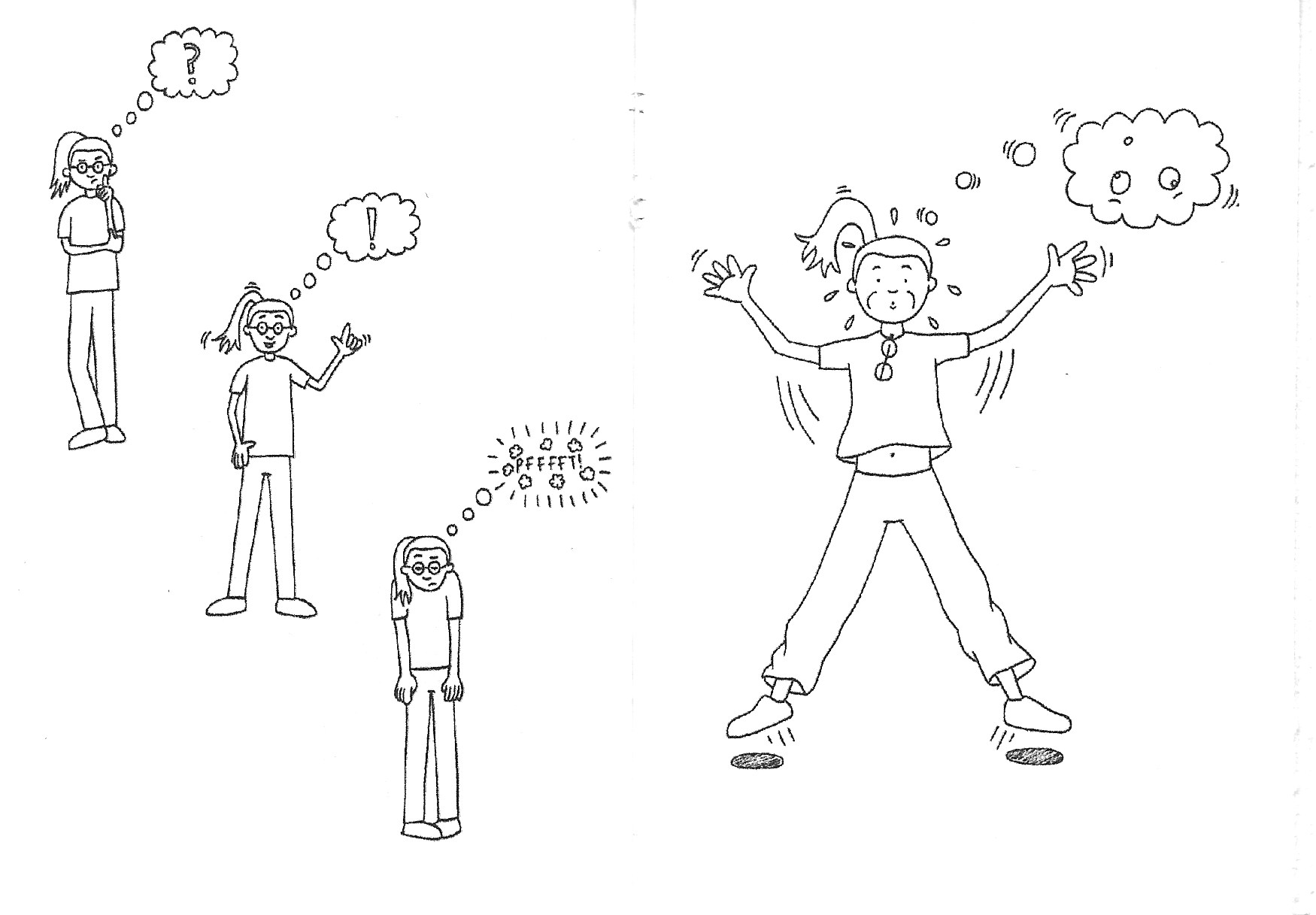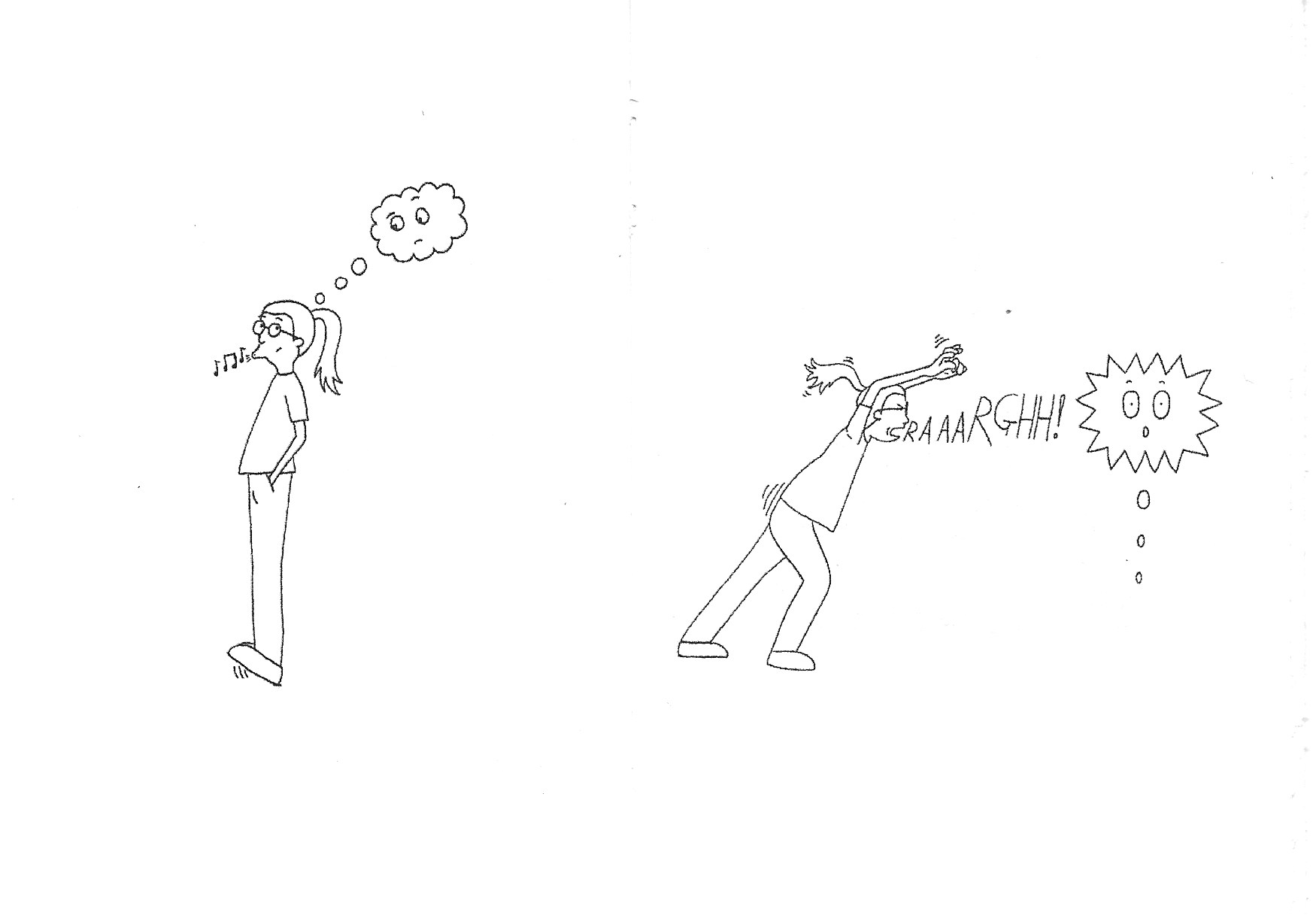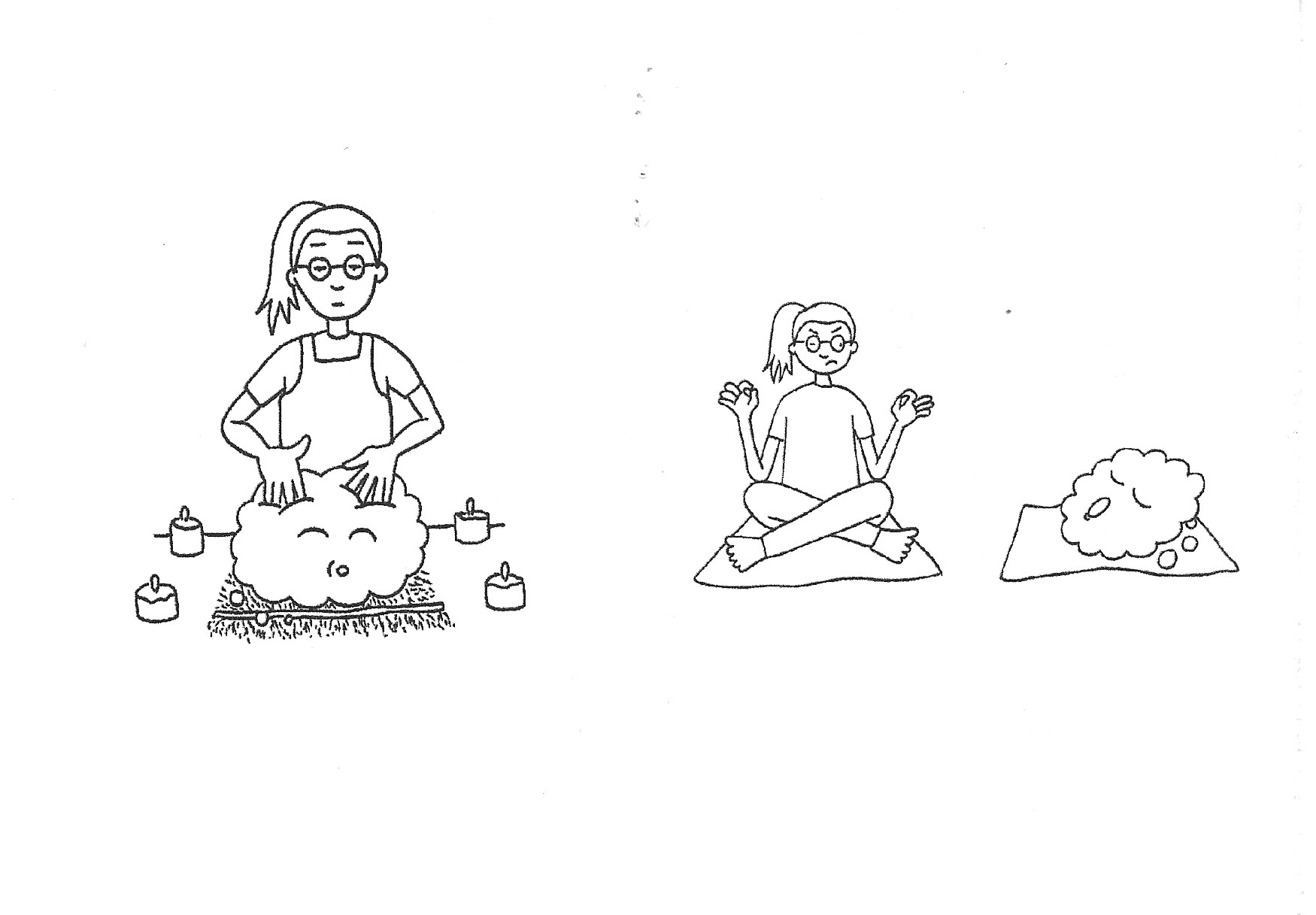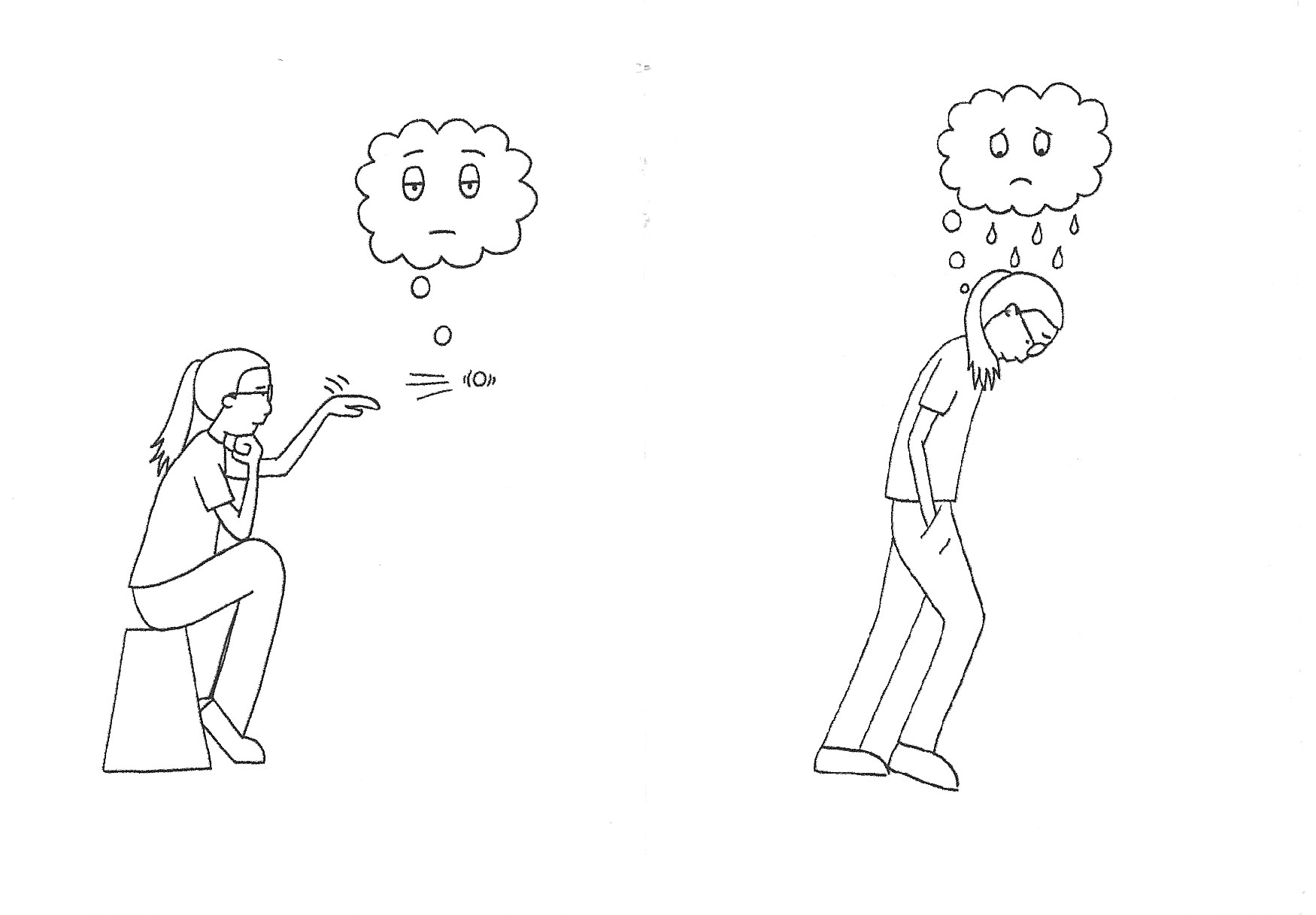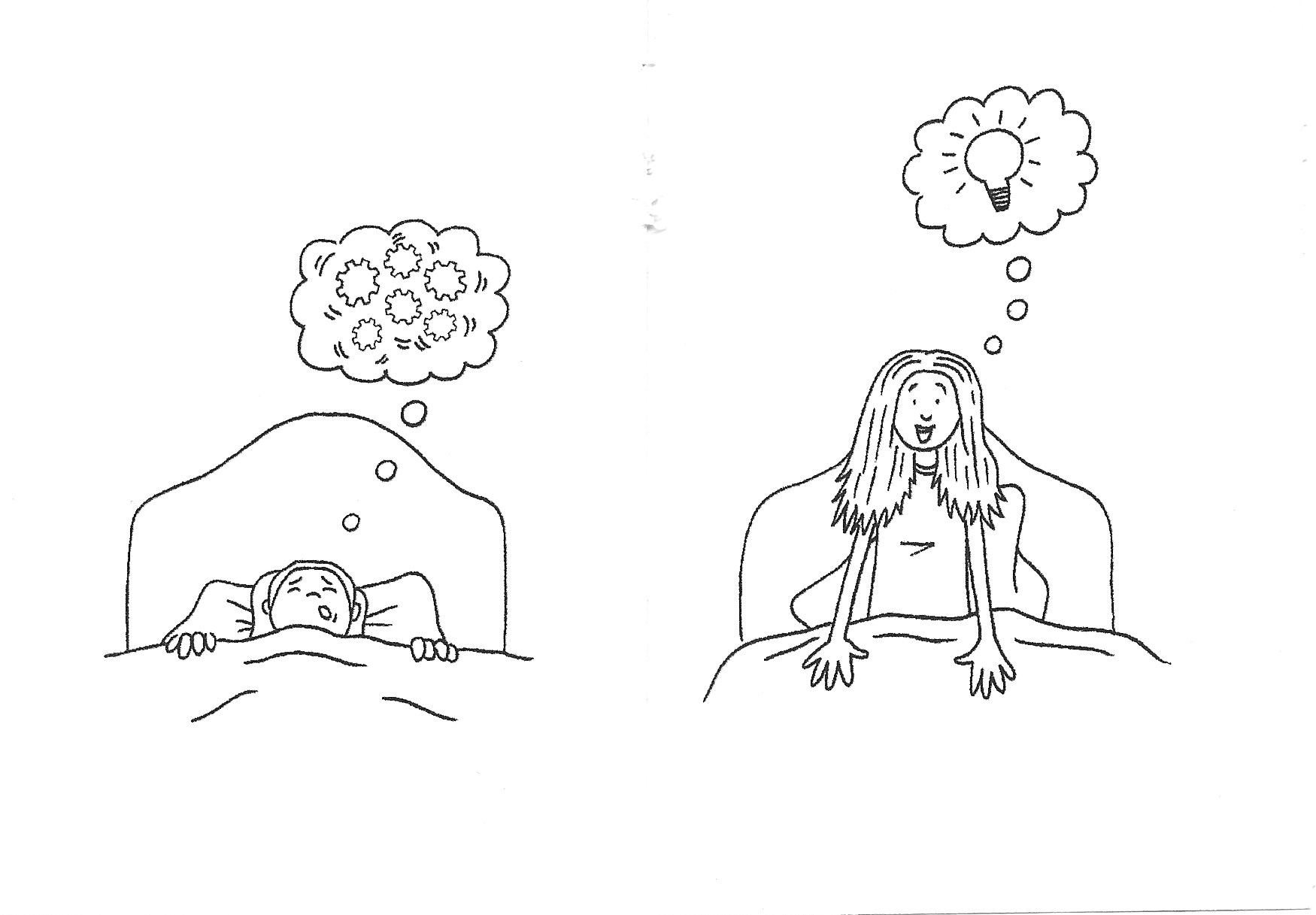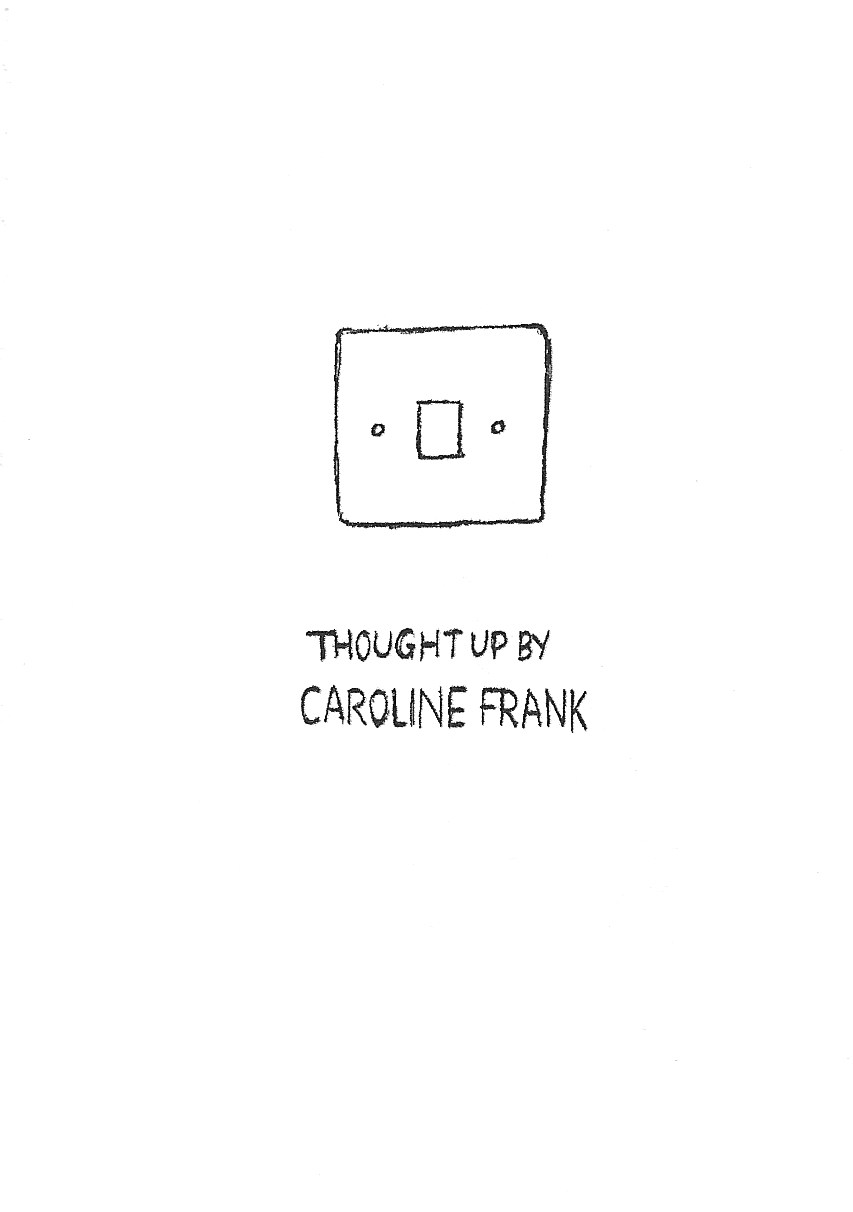Brief
Make your own mini-comic. This will be 16 pages long, and the subject matter and style can be whatever you want it to be.
Your original content can be any size – you might want to write and draw at the same size as the mini-comic pages or make original pages much bigger. You can then photocopy your artwork to the right size and glue the pages onto your mini-comic template, then subsequently photocopy and cut in order to finish your book.
Research
I began this exercise, as usual, by searching for further information and examples. I was quite intrigued by the concept of mini-comics so wanted to see how artists approached creating them and the content within.
I did an Google search for mini-comics and gradually built up quite a reference file for this genre (please see References below). Some of these were more technical with descriptions of how to create the mini-comics, whilst others were particular artists’ websites with examples of their own mini-comics.
The three I found the most informative and inspiring were:
- a tutorial by Jessica Abel, which was quite an in-depth description of the process she suggests when making a mini-comic.
- the website of artist Tom Gauld. I particularly liked his style of drawing and use of colour.
- the website for Pretty, Pretty Ugly Comics by Kate McDonough. Again, I liked the simple style of the drawings and that McDonough has made humorous illustrations about her struggle with anxiety, many of which I could relate to.
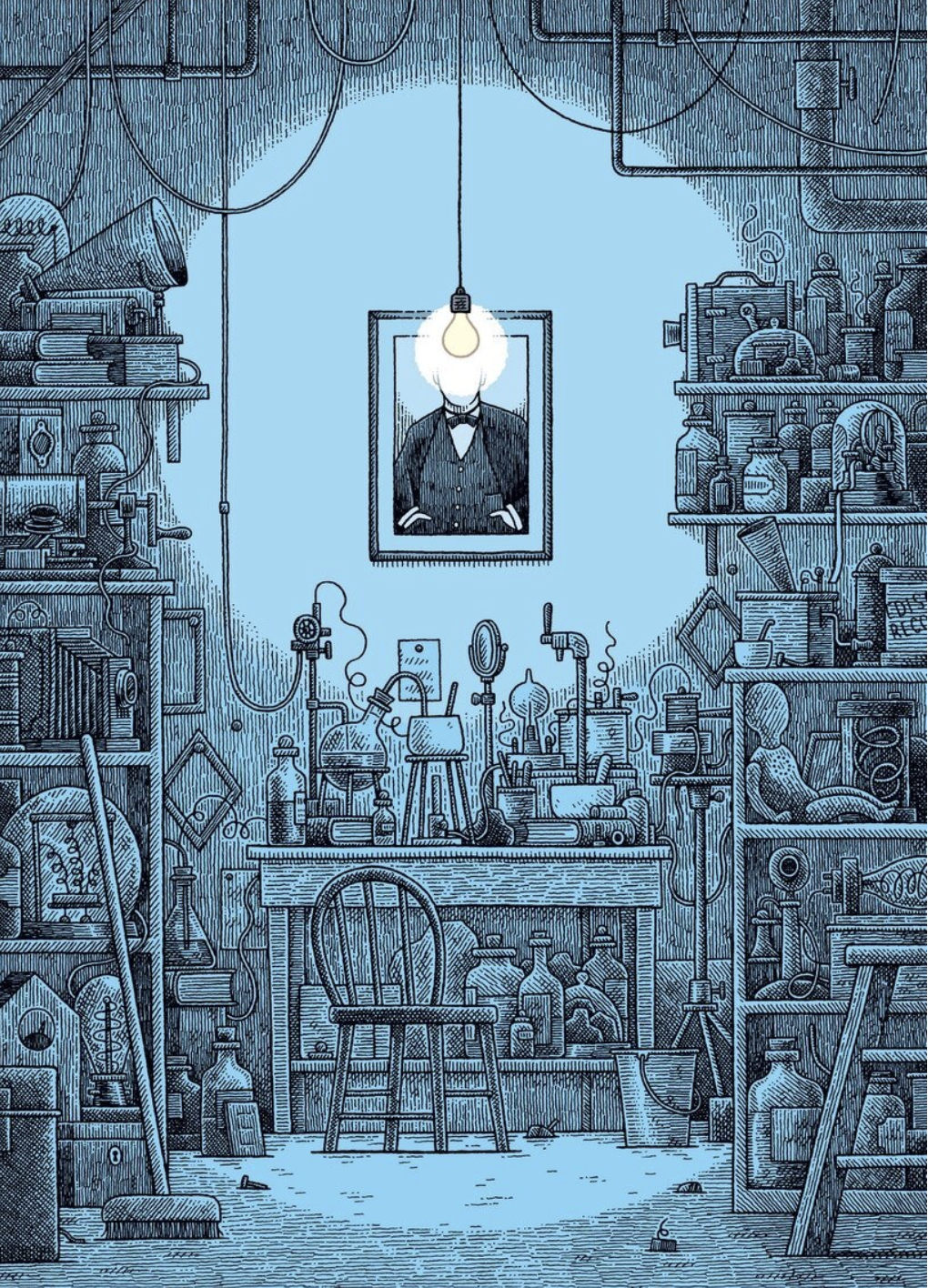
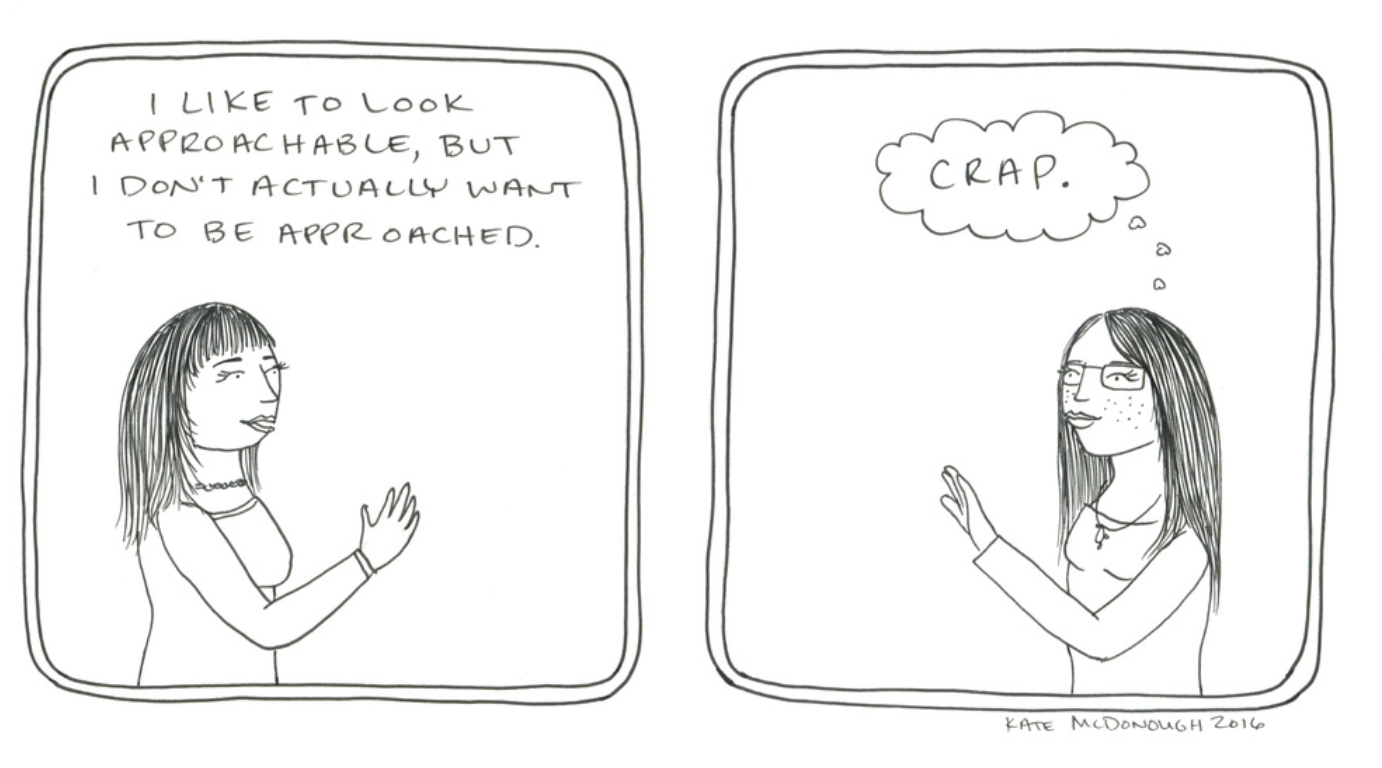
Idea
I was not expecting to find coming up with an idea for this exercise to be so challenging. It may be partly because I was continuing to feel under pressure with the deadline for this unit’s completion, but every concept I thought of was either too short, too complicated or too long to fit in the 14 inner pages of a mini-comic.
After some extended contemplation, I suddenly had a thought of basing my mini-comic on the conundrum I found myself in, that is struggling to come up with an idea. I drew out a mindmap with words relating to various methods of trying to have a ‘lightbulb’ moment.
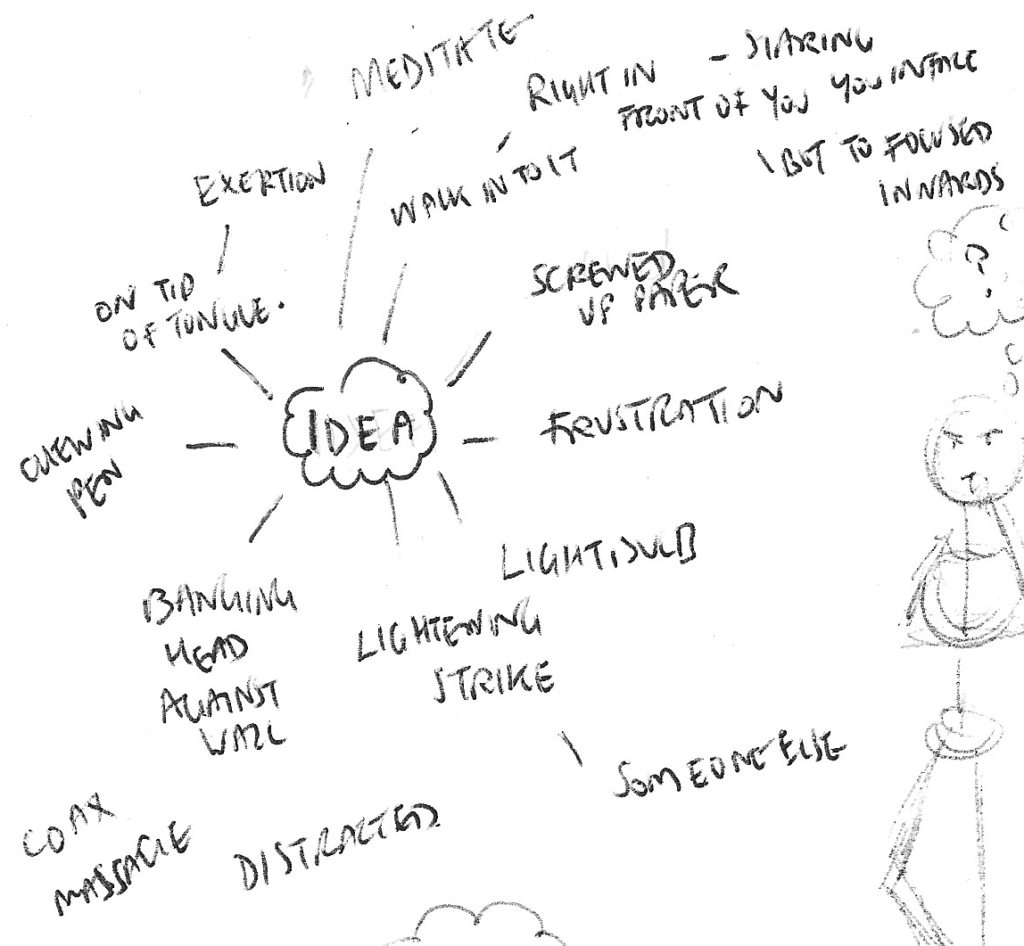
Thumbnails and Sketches
I was relieved to have a starting point and moved onto drawing out thumbnails sketches of potential scenarios for the pages of the mini-comic. I had noted that my tutor pointed out that some of my previous thumbnail sketches had not been easy to decipher so I chose to use a black biro instead of a pencil for these, which I hope makes them slightly more readable, but I tend to write/draw them out quickly and not particularly neatly.
The plan was to have a character that tries various methods to come up with an idea, with some of the frustrations this inevitably entails. I wanted to keep it quite simple in style and focus on the body language of the character rather than including too much descriptive text. I then expanded my concept to have a ‘thought bubble/cloud’ linked to the character and the tensions between them as they struggle to reach a satisfactory result. I was keen to have visual humour in the illustrations, such as that I had discovered in an earlier Research Task (Funny Pictures) by artists including Don Martin. I also hoped to include sound effects as this was an area I had not really included in previous work.
My next task was to organise the individual scenarios into some kind of order. I cut each thumbnail out and placed them on my desk, trying out various arrangements.
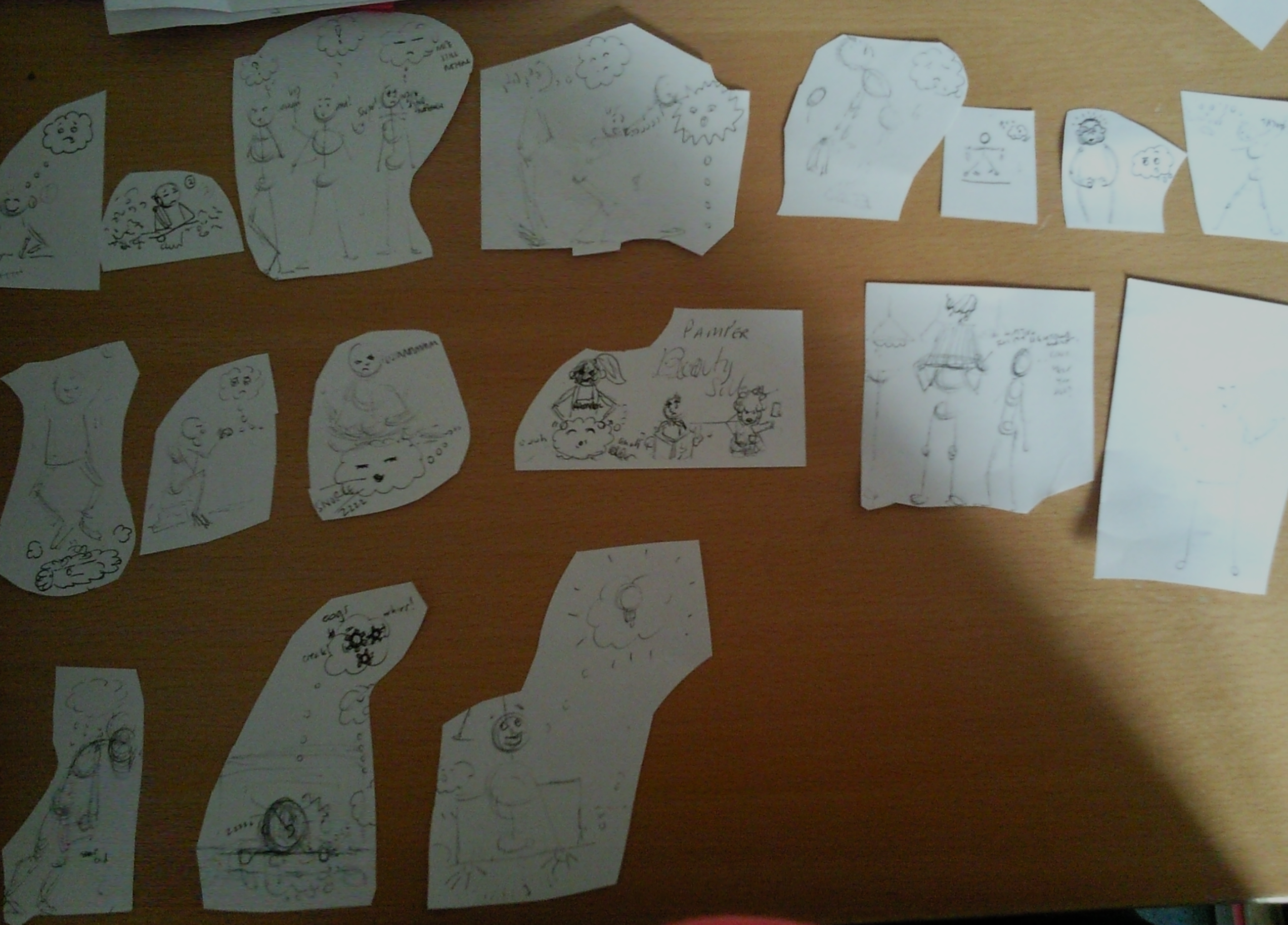
As there was a limit of 14 inner pages for the mini-comic, I had to be quite ruthless and remove several thumbnails. After a while I was fairly happy with the arrangement I had settled on.
Draft Mock-up
I then decided to make a very rough mock-up version of the mini-comic so I could see how the illustrations would work in sequence. I have briefly outlined what is being depicted on each page (the order of these was changed several times at latter stages).
Page 1: Sitting down with paper and pen ready, looking slightly too self-assured that an idea will come easily…
Page 2: As the clock indicates, much time has passed and nothing been achieved, enhanced by the head banging on the table and screwed up balls of paper.
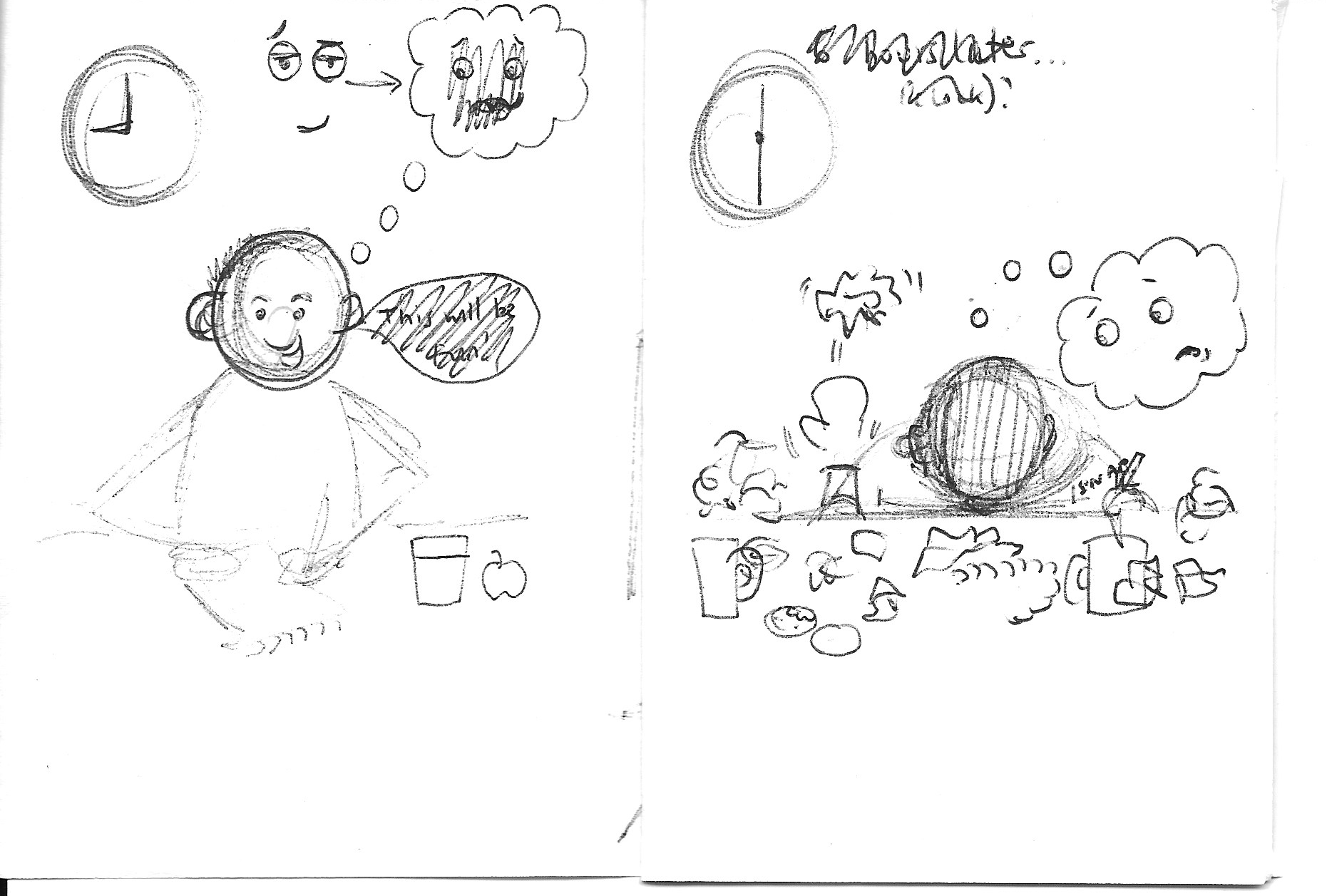
Page 3: Thinking..has an idea formed…nope.
Page 4: Maybe some brisk star jumps will get the blood flowing to the brain…
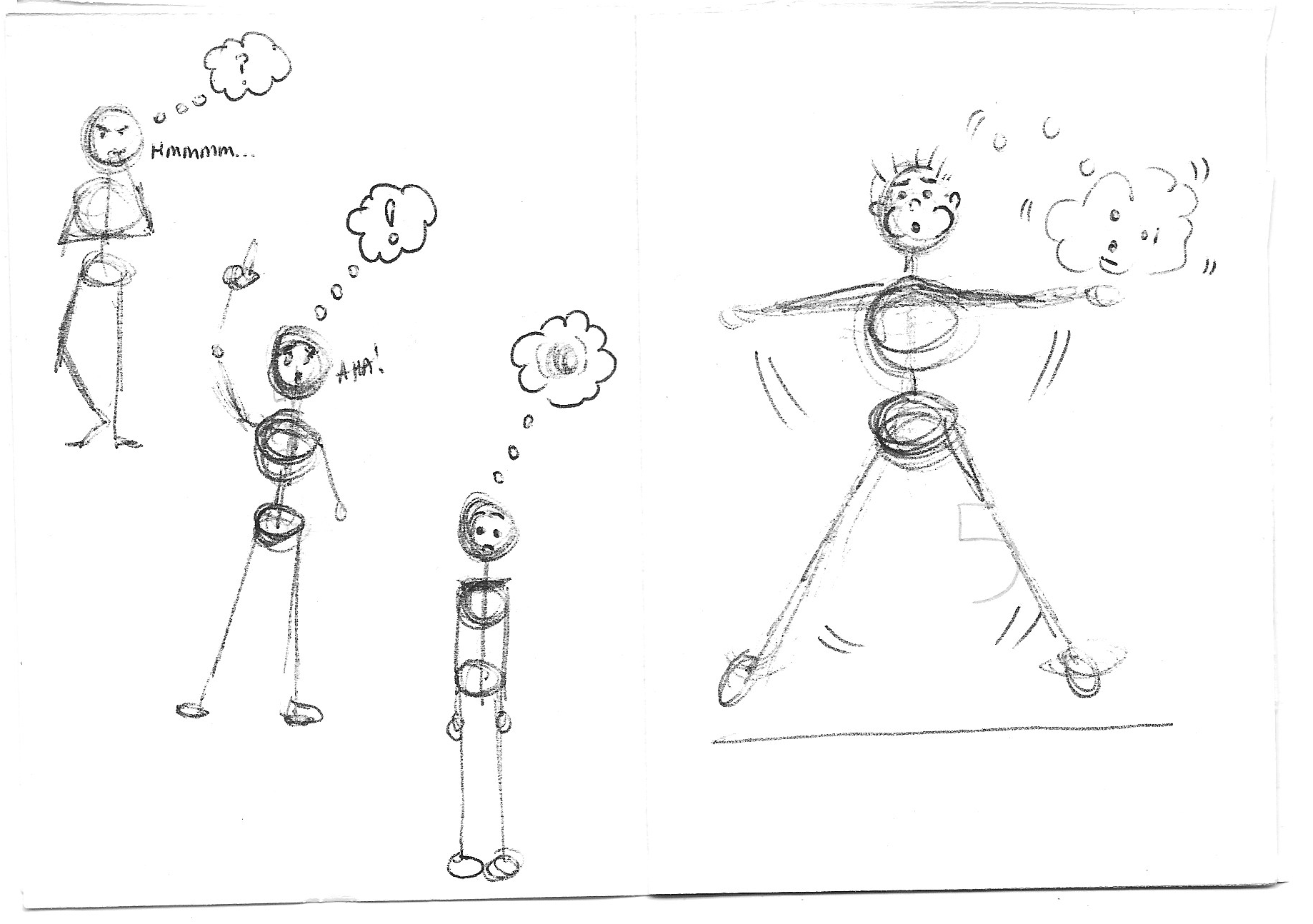
Page 5: I’ll pretend I am not bothered and then…
Page 6: …catch the thought bubble unaware!
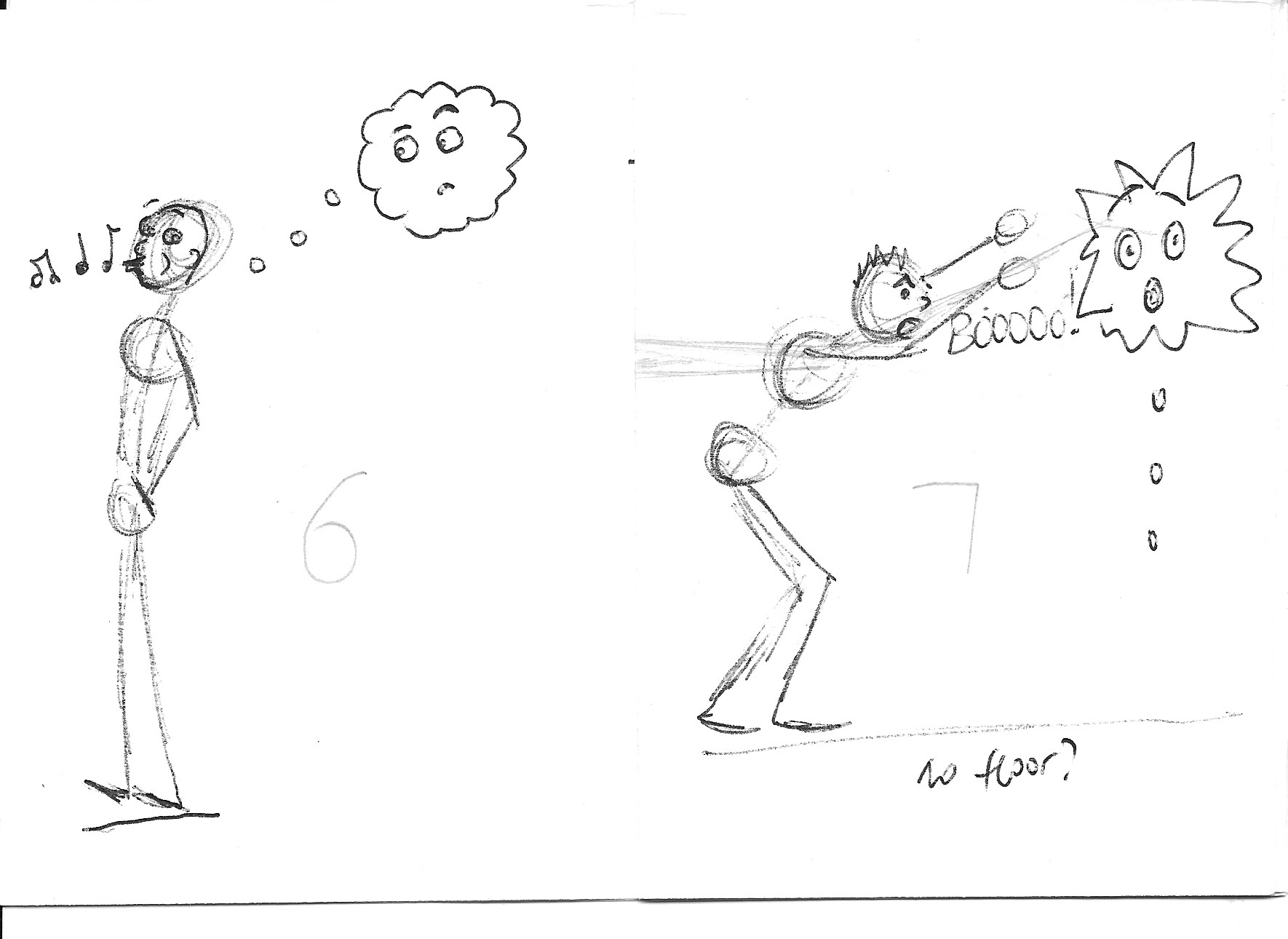
Page 7: Aaarghh! The frustration is showing…
Page 8: Taking the anger out on the poor thought bubble.
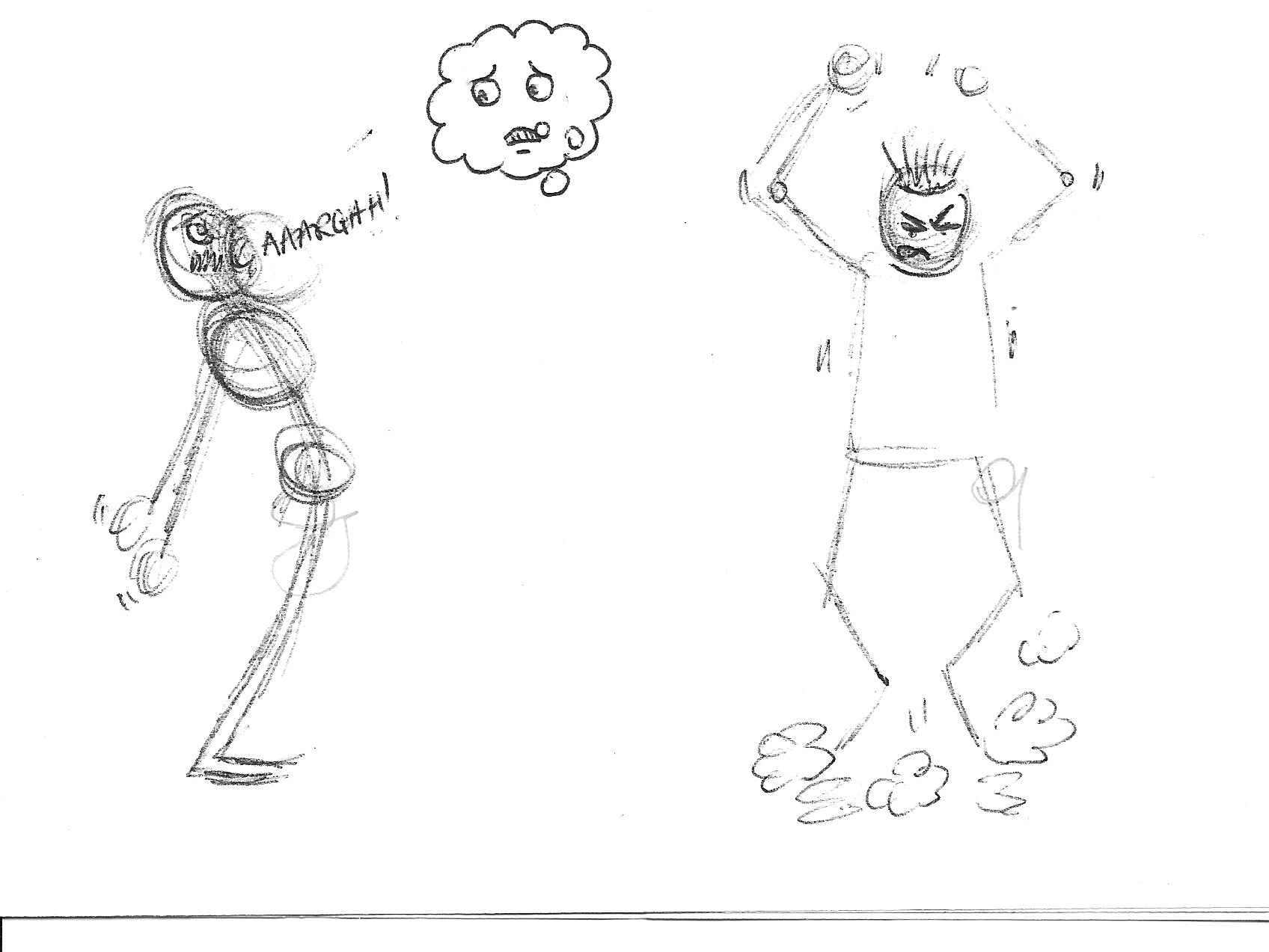
Page 9: Fed up (vaguely emulating ‘The Thinker’ pose).
Page 10: Massaging the thought bubble to stimulate ideas…
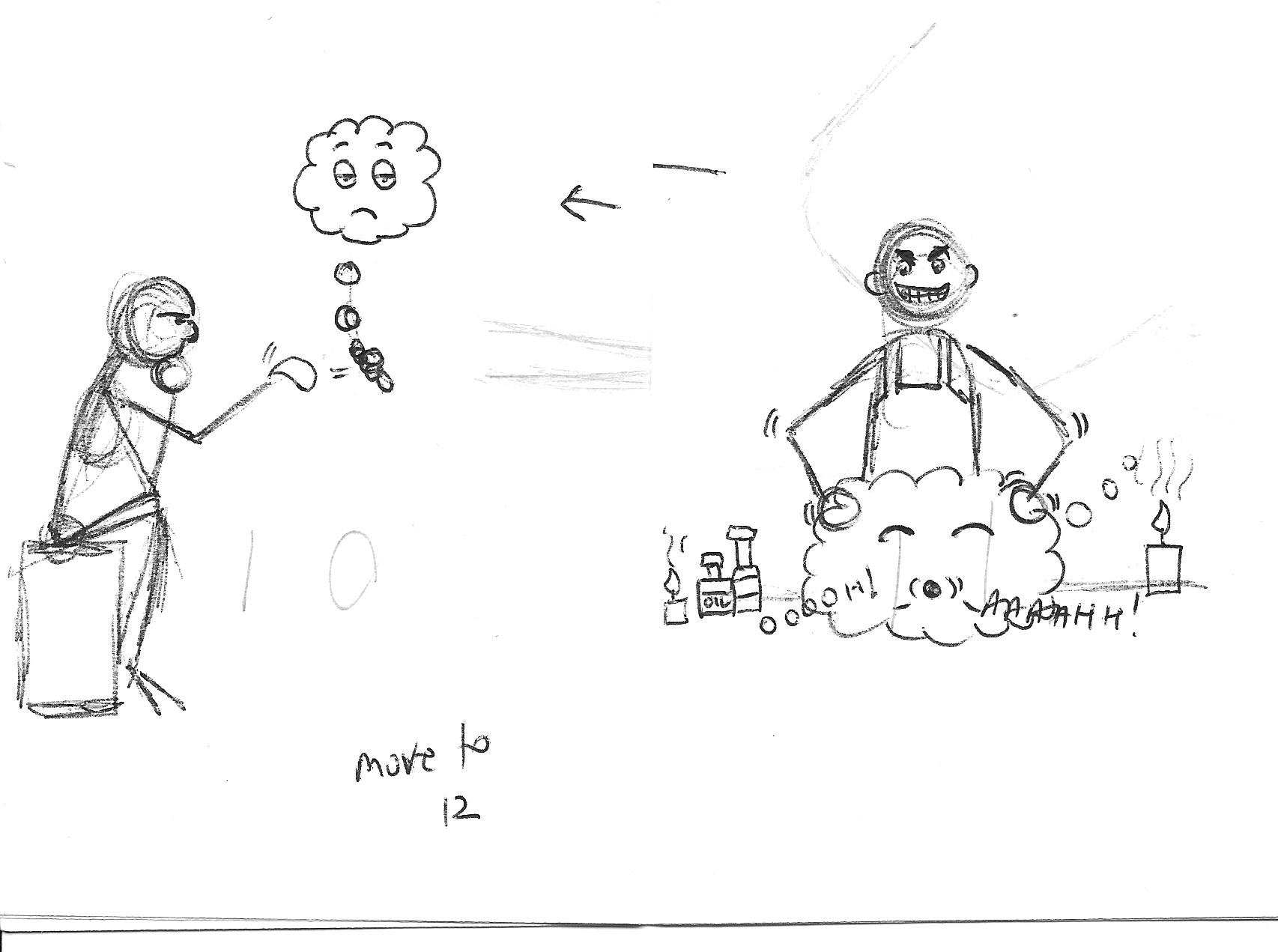
Page 11: Trying to meditate to clear the mind, thought bubble has other plans, i.e. going to sleep.
Page 12: Despondent.
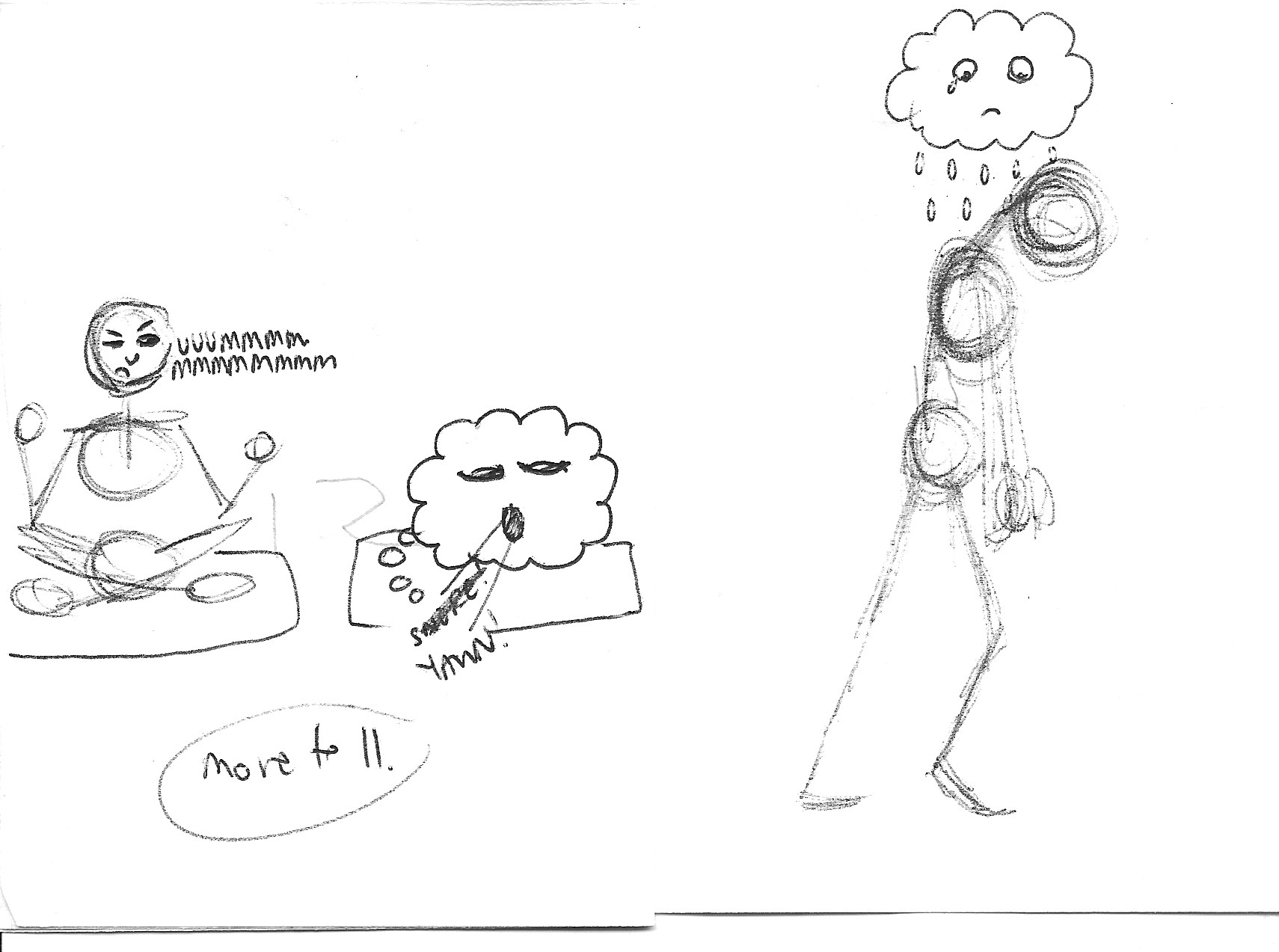
Page 13: Asleep in bed, cogs start whirring in mind…
Page 14: Aha! Lightbulb moment.

I was feeling quite happy with my progress so far and I thought that the sequence of images could work quite well.
Refining the Mini-Comic
The next task I had to overcome was designing a character that I would be able to draw multiple times and would meet my requirements of being fairly simple and humorous.
I really struggled with this part of the exercise. Although I found the ‘stickman’ approach I had used for the sketches so far helpful to create the expressive body language I was aiming for, I wanted to flesh the character out.
I tried various versions, a couple of which can be seen below, but I was not keen on any of them.
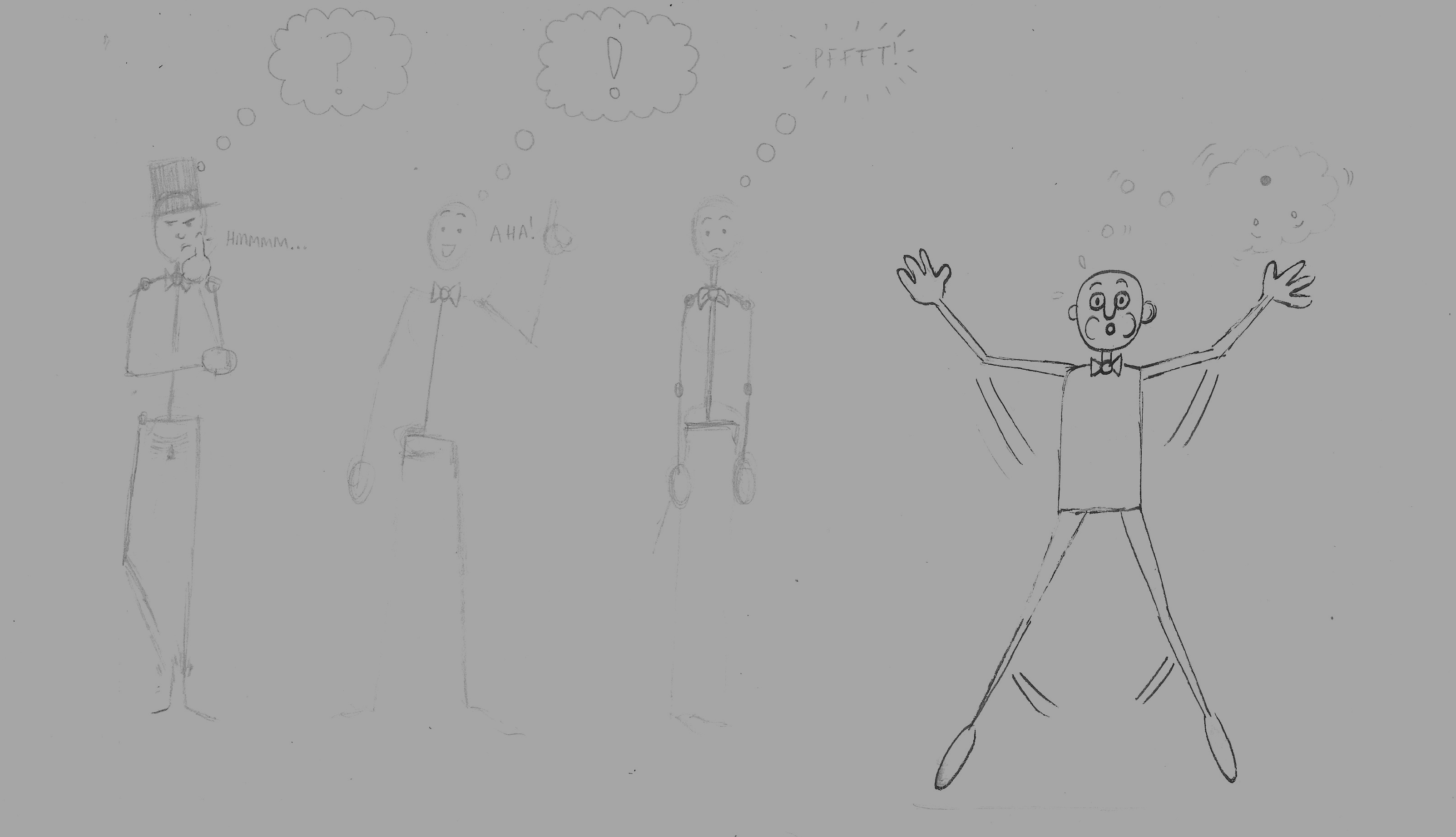
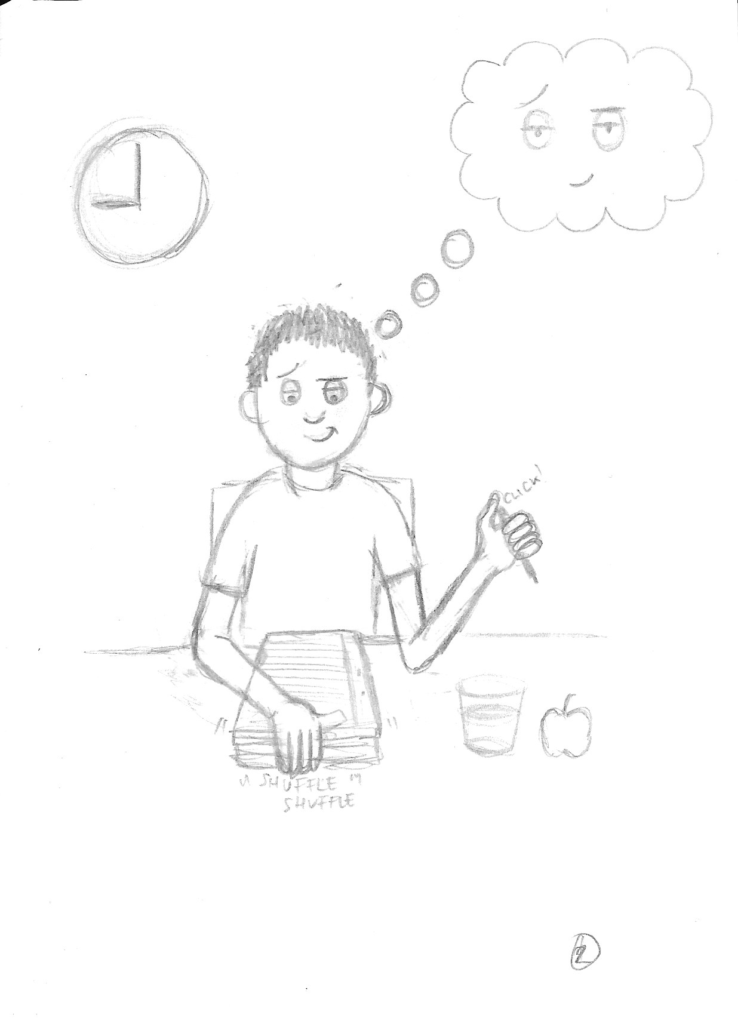
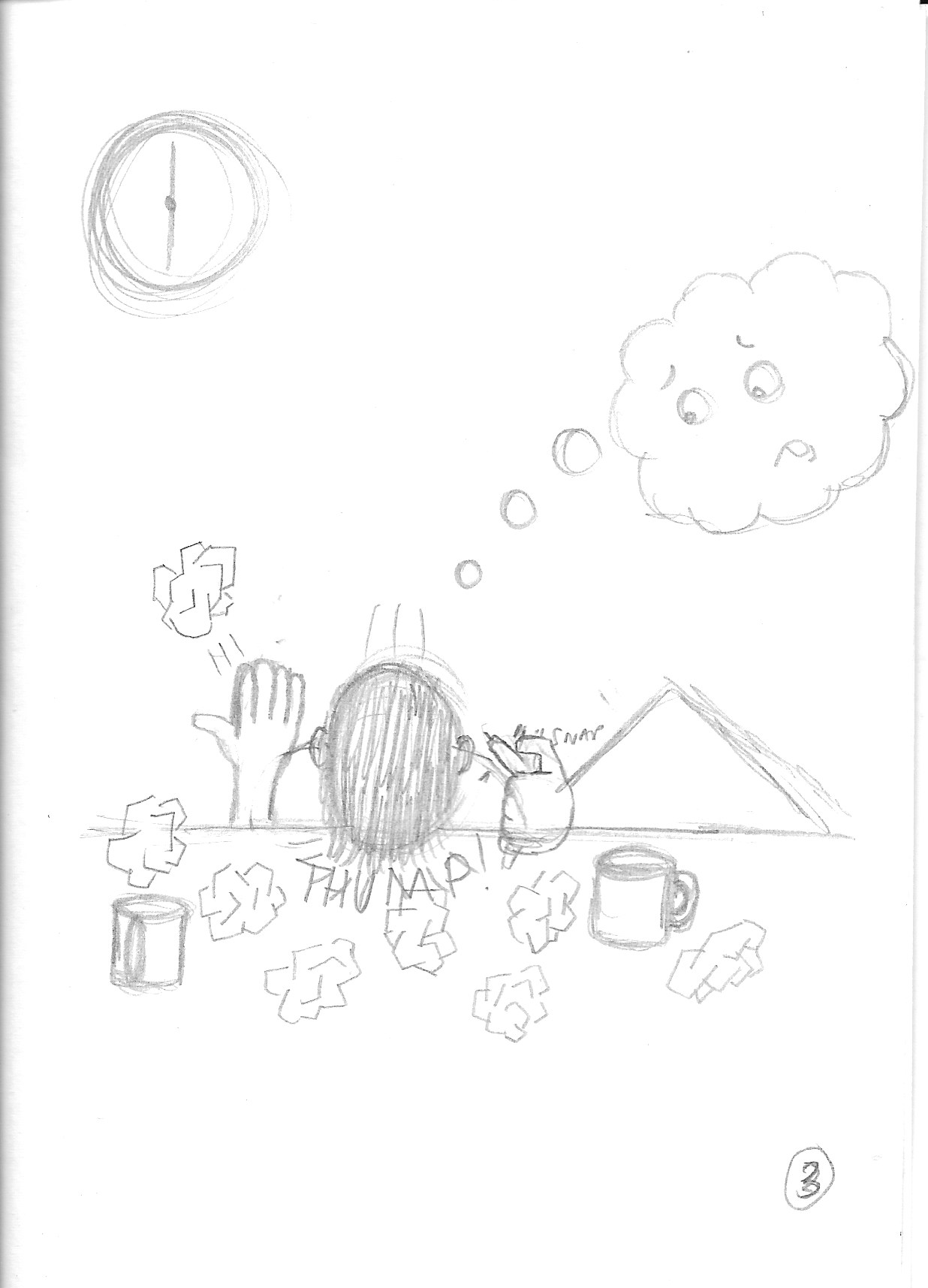
I decided to take a break as I was becoming quite frustrated and instead drew out a potential front cover design.
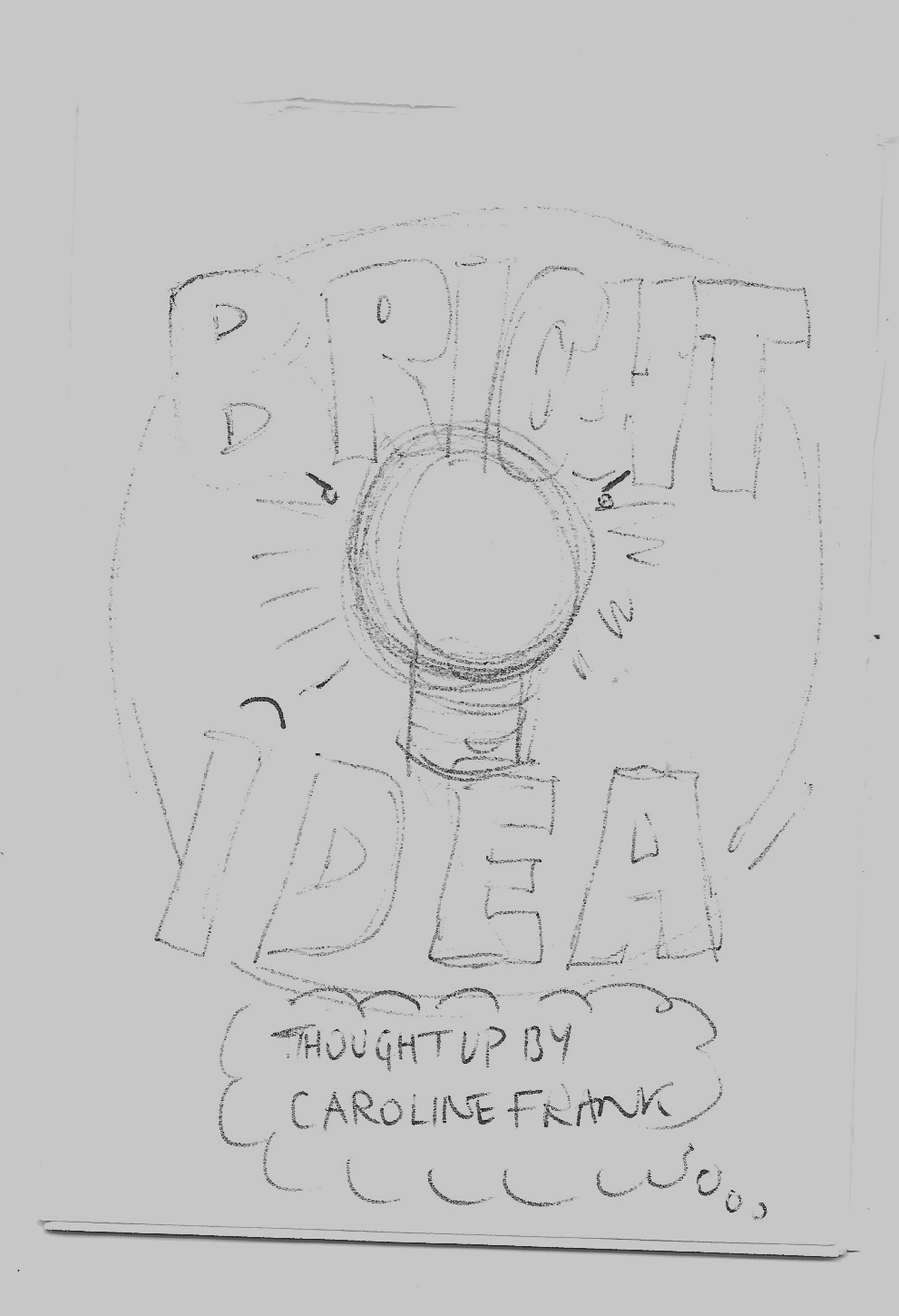
Once I returned to the exercise I had made a decision to just go for it, basing the character on me and I ended up drawing (using pencil and then fineliners), refining and redrawing until I ended up with the set of drawings below.
















I had reached a stage where I forced myself to be pleased with the sequence of images, otherwise I would have continued to refine them obsessively. I at least felt I had made a positive attempt at focusing on the body language of the character in order to communicate her feelings/intentions. I hoped the illustrations would be easy to read visually.
I added a front cover design which can be seen below.

For the back cover I drew out a very simple light switch, to continue playing on the ‘lightbulb’ theme, and added my name. I made myself use only hand-drawn lettering for the mini-comic, as per the norm of this genre, which is something I need to work on.
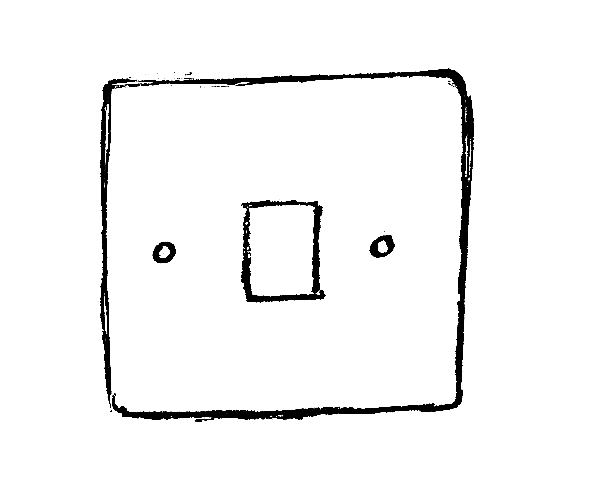

Printing the Mini-Comic
Rather than cutting and pasting the illustrations, as suggested in the brief, I decided to use the scanned version and arrange them in Illustrator (which was not as simple as I thought it would be…).
I also used this as an opportunity to clean up some of the marks that had been included from the scanner glass, as well as making a few adjustments to the positioning of certain elements within the illustrations, which I felt were improvements.
The final mini-comic can be seen below. The first set of pictures are scans of the pages and the second set are photos of the mini-comic as a whole (these are quite blurry due to the quality of my phone’s camera). Please click on the first set of images to view as larger versions, which open in new tabs.
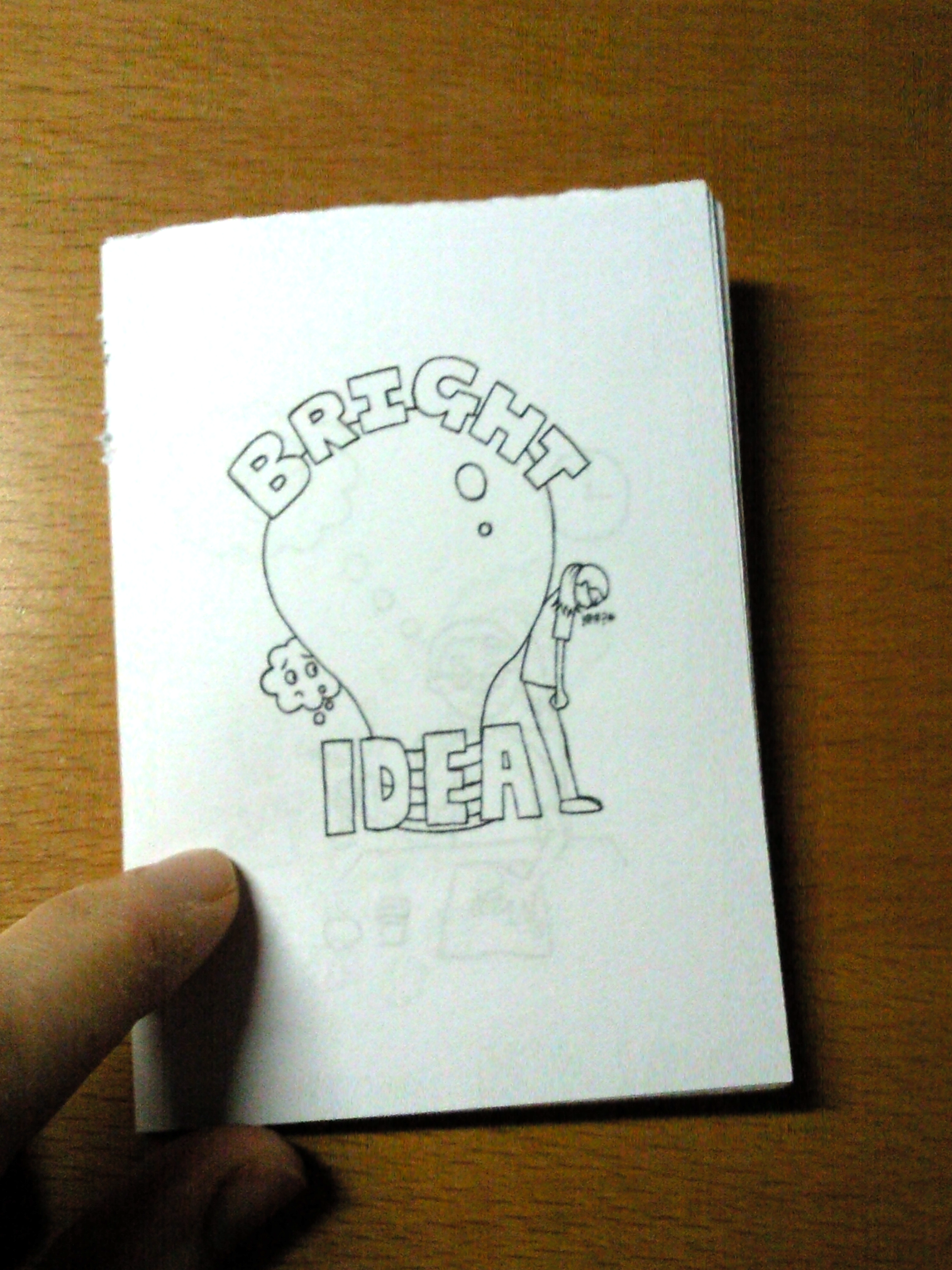
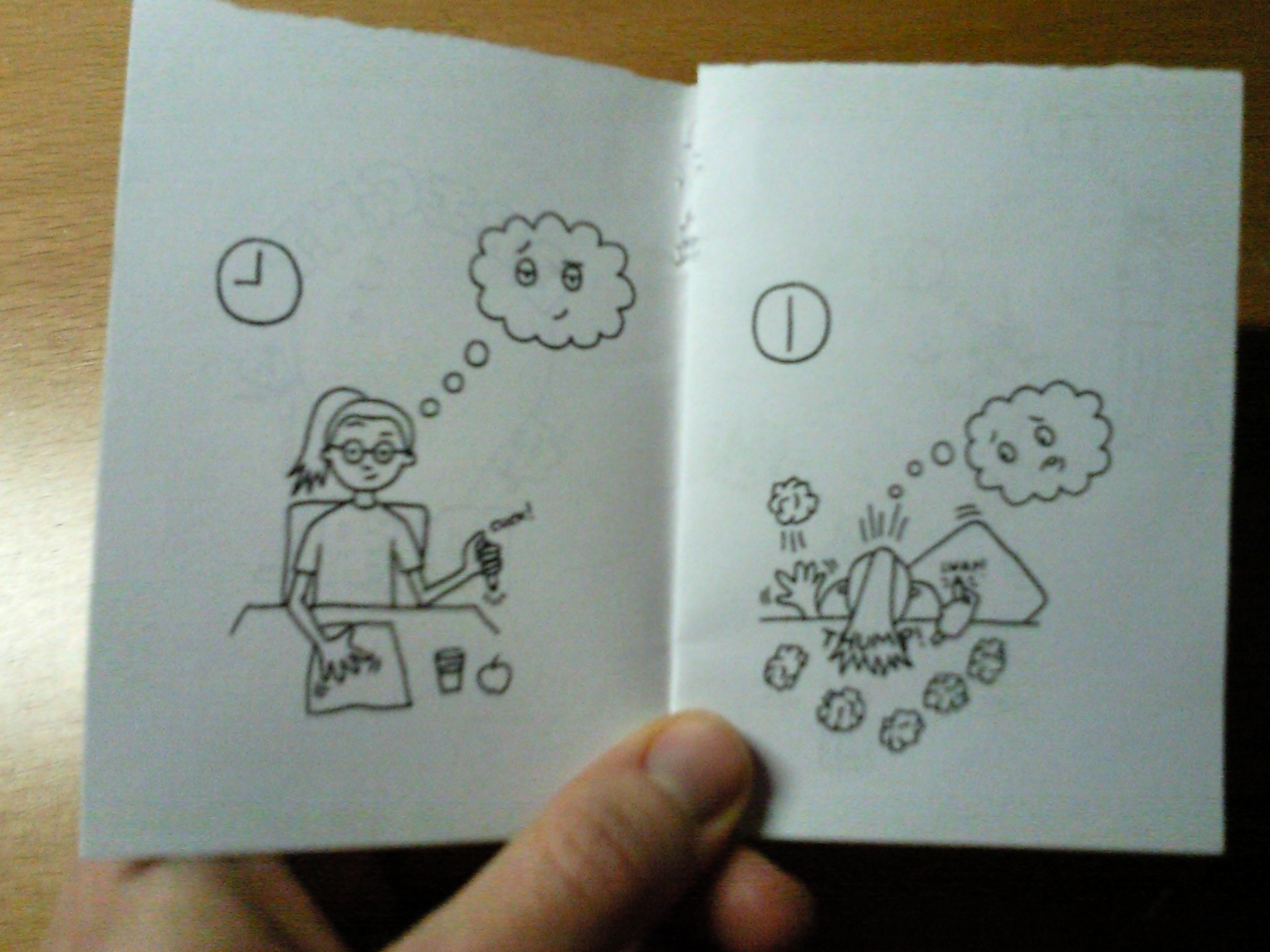
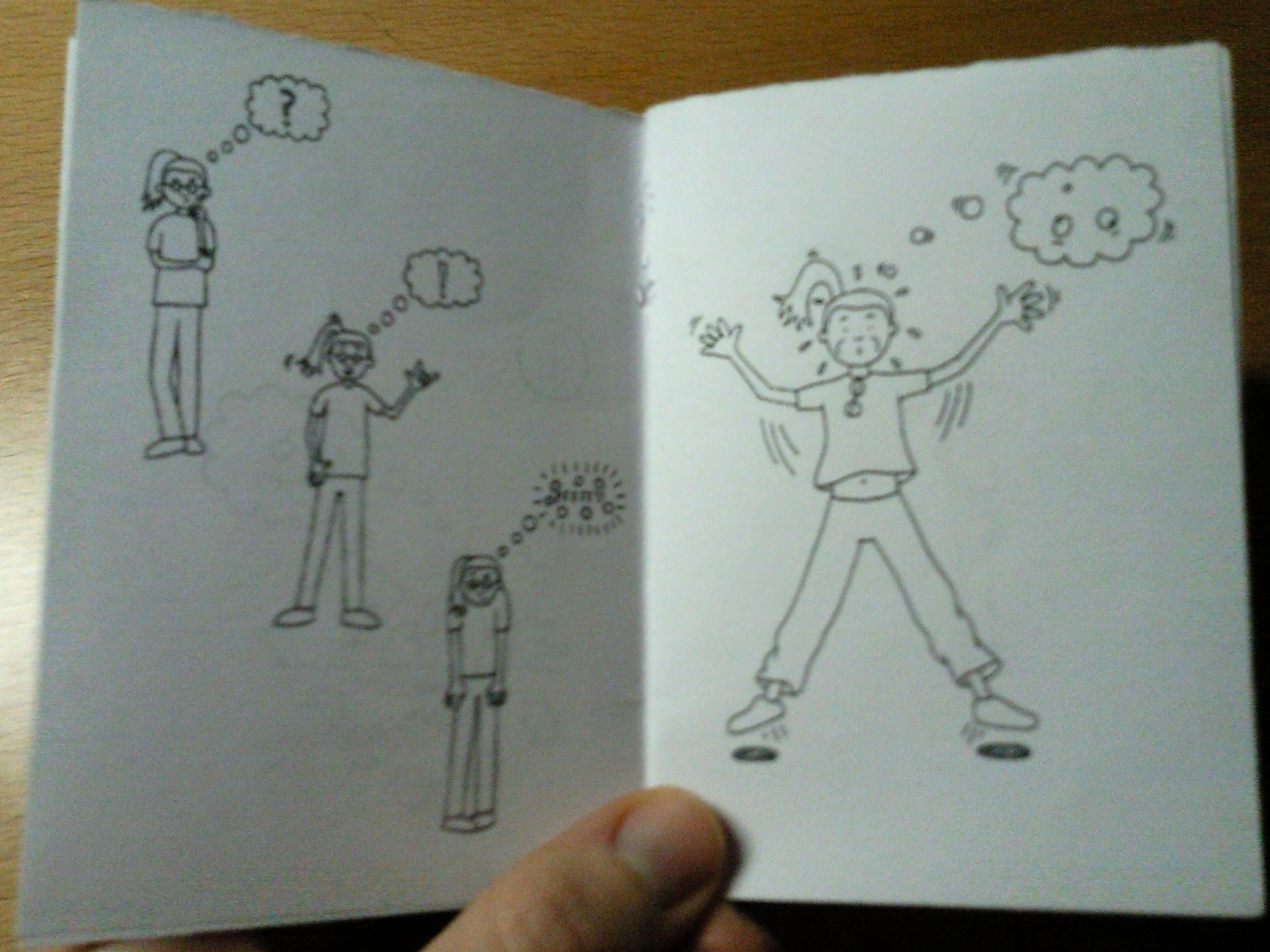
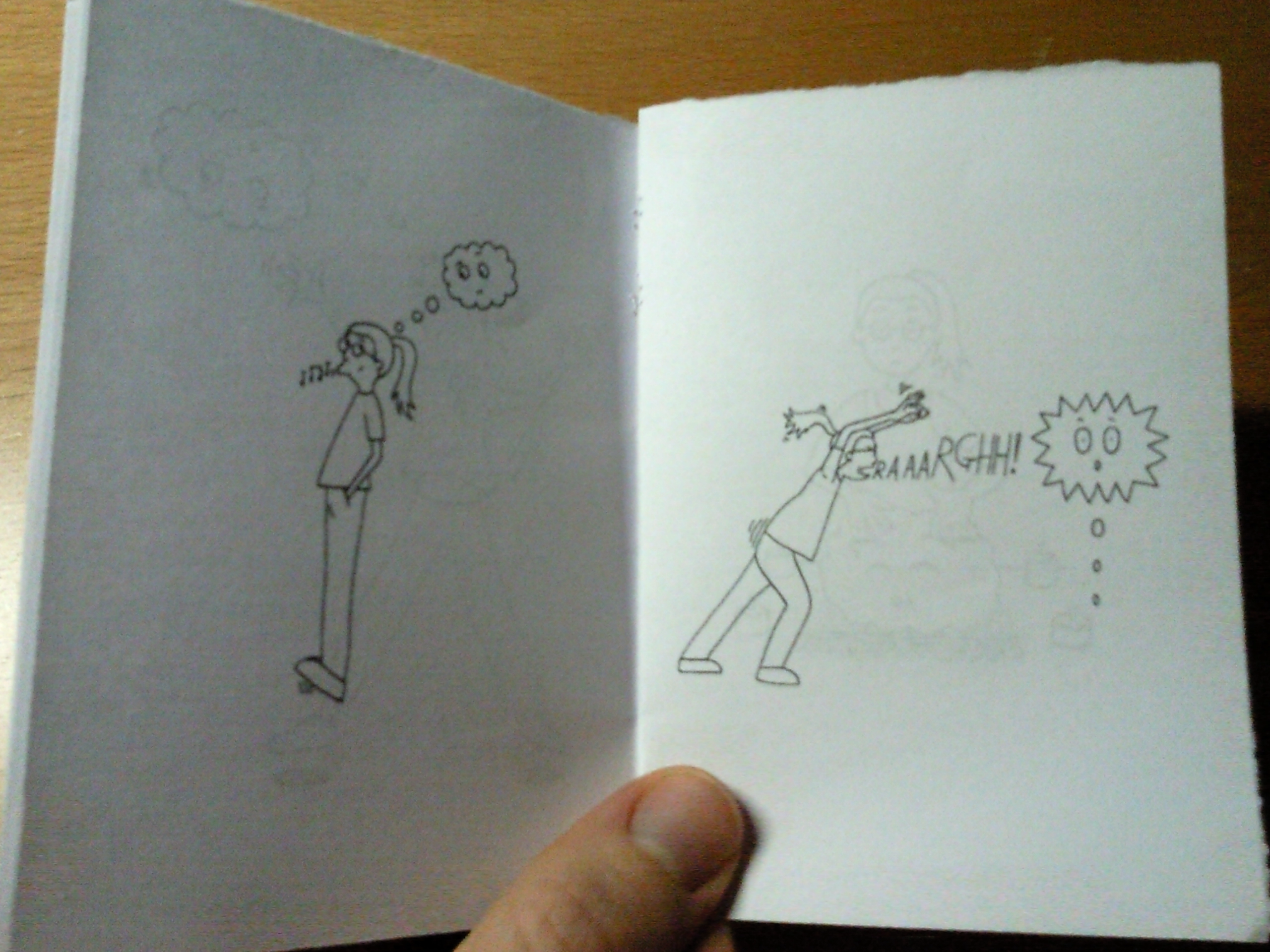
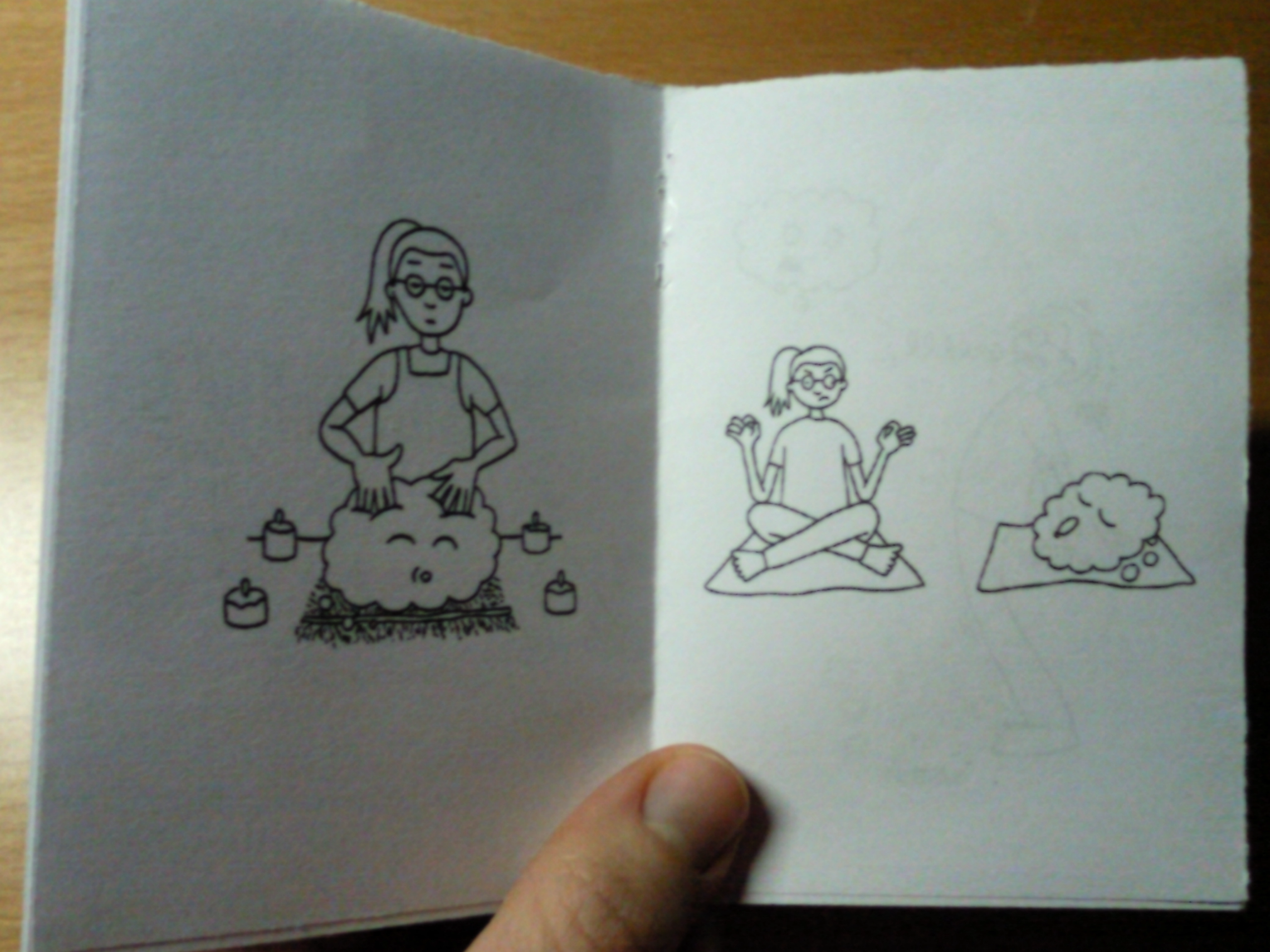
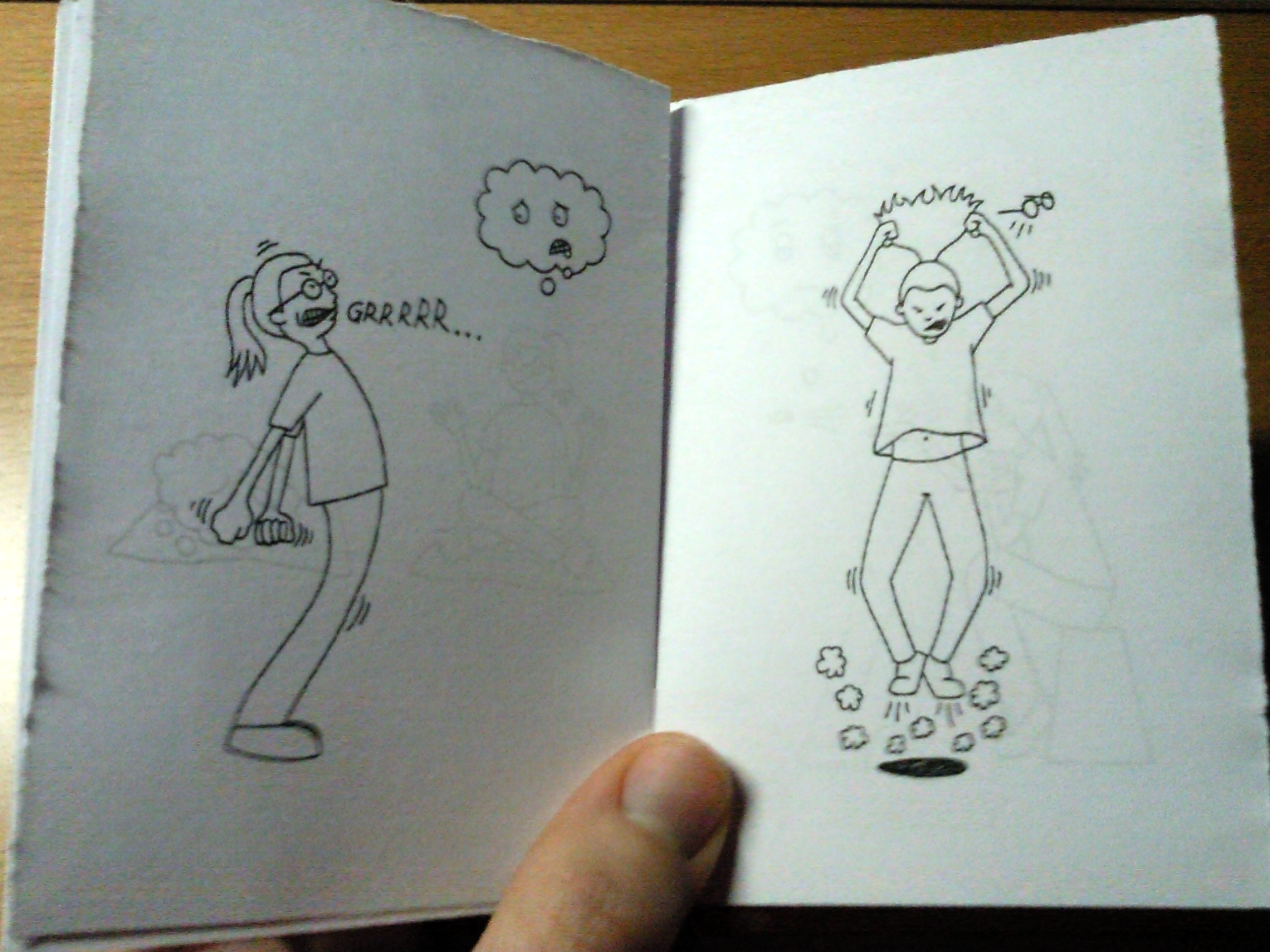
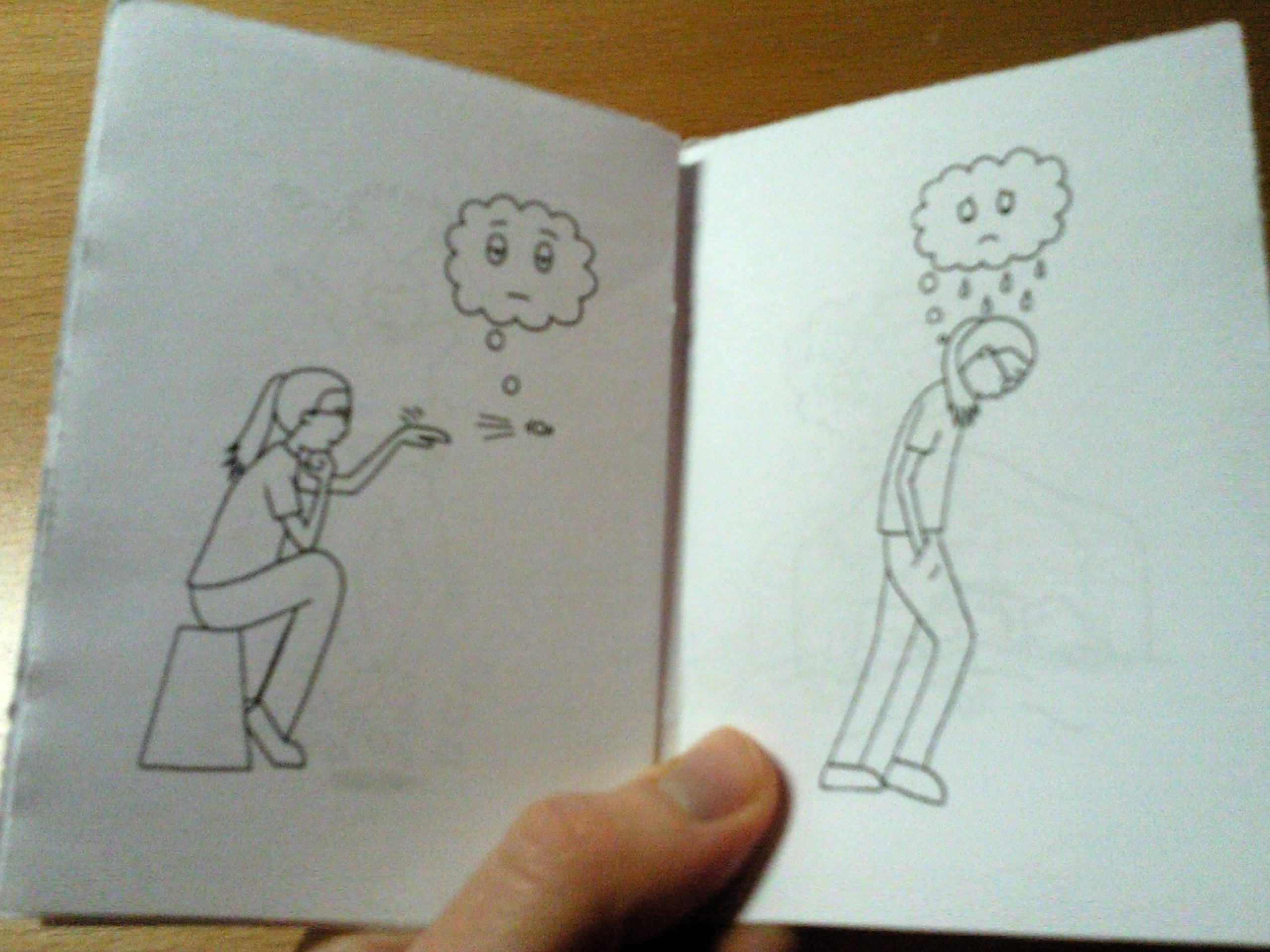
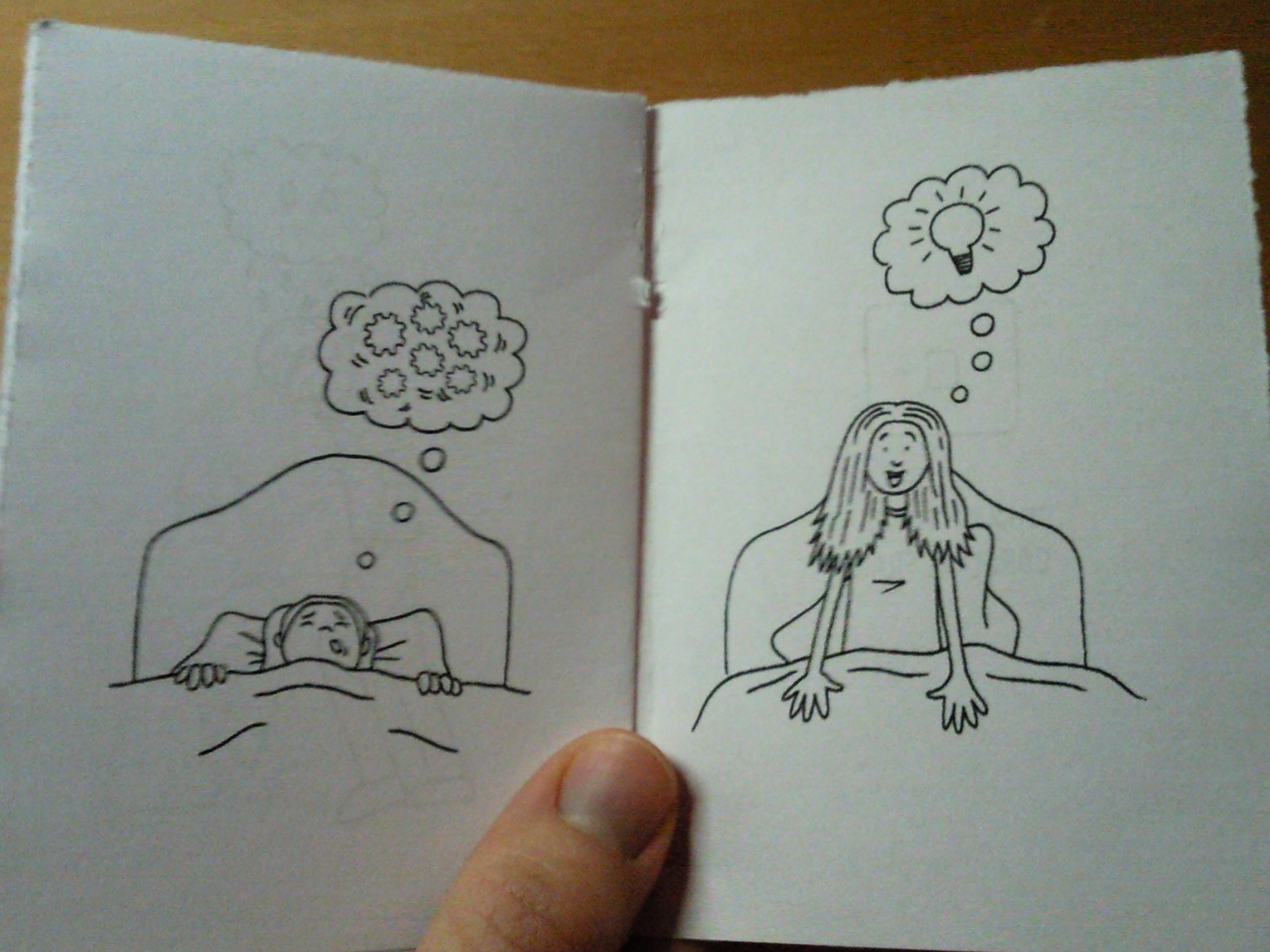
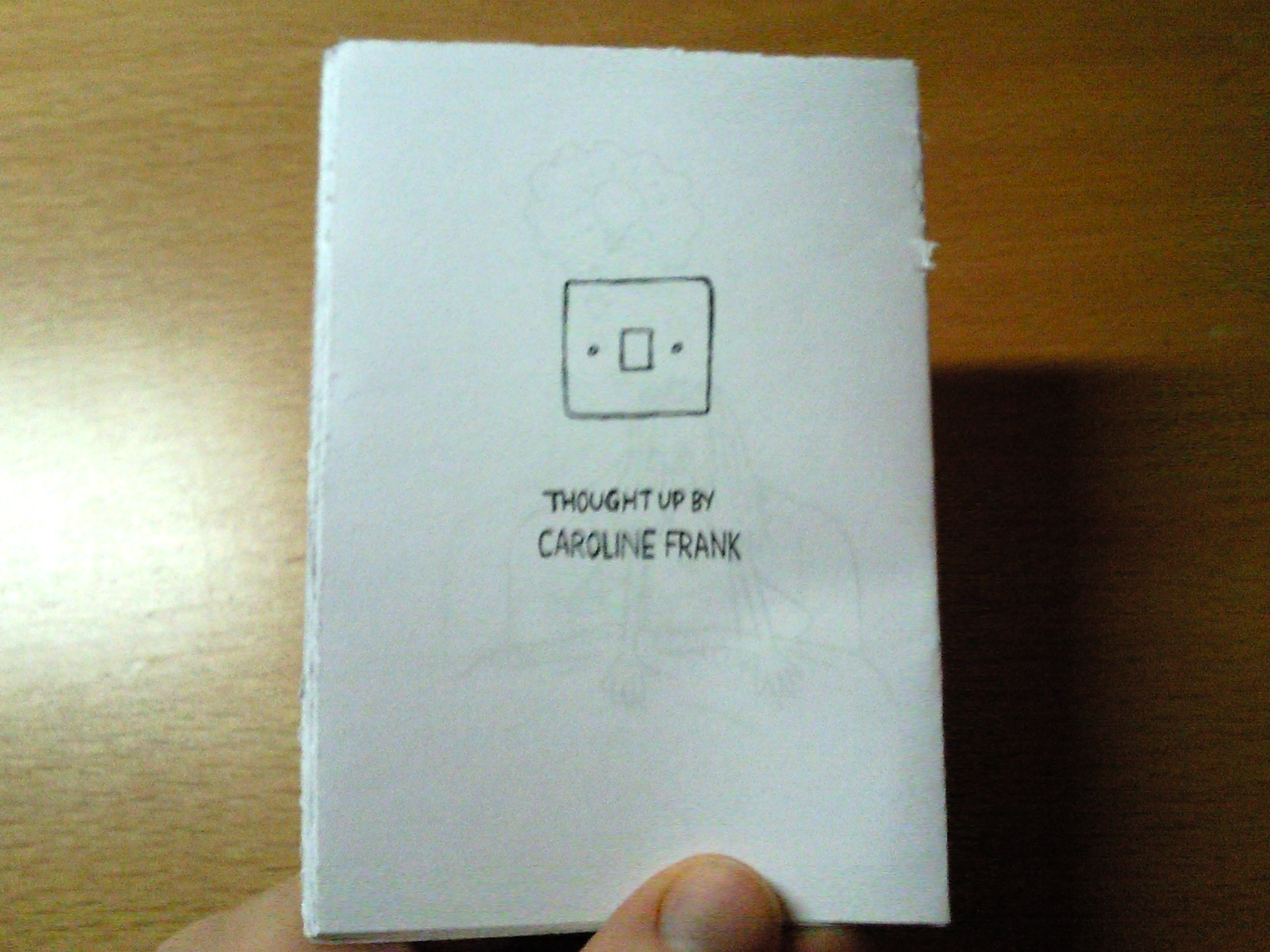
Final thoughts
I was not expecting to find this exercise so difficult, in fact I had been looking forward to it. I enjoyed the research at the beginning in which I learned a great deal about mini-comics, but forming my own idea was a real struggle. Ironically, this mental block resulted in the concept I ended up using in, what I considered, a quite humorous format.
On the positive side I am definitely becoming more confident with working systematically beginning with thumbnails/sketches and refining these multiple times until reaching the final conclusion. I find it quite satisfying when I look back at the, frankly, extremely rough initial drawings and compare these to the final piece. It sometimes is such a journey to get to the latter that I am not quite sure how it happens!
In terms of the mini-comic itself, I was pleased that I managed to use expressive/exaggerated body language to put across the scenario in each one, some of these were possibly more successful than others, but overall I managed to achieve a standard that I was satisfied with. I tried to keep continuity in the character design across the pages, e.g. proportion/clothes/etc, which was made slightly easier by the simplicity of the style. A particular element that really bothered me was the hair of the character, which I could just not get to look how I wanted it to. I was keen not to overcomplicate the pages due to the size, so that they could be read visually quite easily. I need to continue to work on my drawing skills and I plan to begin attending weekly life drawing classes in the not too distant future, which I feel will be extremely beneficial.
I worked at various sizes for the drawings before I scanned these into Illustrator, which ended up creating some discrepancies when I scaled them to fit on the final mini-comic, such as varying line thicknesses. Additionally, I did not fully take into consideration the dimensions of the mini-comic when drawing and so, for example, the illustration on page 6 had to be scaled right down (as did the one page 5 to work as a sequence ) in order to fit and as a result it looks too small on the page.
As a sequence of illustrations, I was quite pleased that there was a continuity and flow through the mini-comic and that, despite there being an intentional limited use of words, it is hopefully fairly easy to understand.
Reflections After Tutor Feedback
Further to my tutor’s comments regarding the layout of the mini-comic, I agree that in the future I should definitely try using Indesign to compile the final version for this type of work. I generally worked by eye when I used Illustrator for this exercise whereas in Indesign I could have been precise and methodical to create a more professional result by implementing guidelines for gutters/margins, etc.
I do think part of the issue, as previously stated, was that I did not work on each illustration at a similar scale, so when as a result I had to reduce the size of certain drawings there was not any balance across the double spread.
As my tutor raised this question it reinforced my belief that this aspect really let down the final work in what was otherwise a successful outcome, however, I have learnt that I should always plan the layout from the early stages, work to scale on each illustration and use InDesign to construct the final layout.
References
Abel, J. (2004). diy: making minicomics – Jessical Abel. [online] Autonomous Creative with Jessica Abel. Available at: https://jessicaabel.com/resources/diy/making-minicomics/. [Accessed 26 January 2022].
Bard, R. (2021). Handmade Mini-Comics. [online] Rachel Bard. Available at: https://www.rachelbard.com/comics. [Accessed 26 January 2022].
Big Time Attic, (2007). Tips and Tricks: How to Make a Minicomic. [online] Available at: http://www.bigtimeattic.com/blog/2007/03/tips-and-tricks-how-to-make-minicomic.html. [Accessed 26 January 2022].
Cep, C. (2019). The Real Nature of Thomas Edison’s Genius. [online] The New Yorker. Available at: https://www.newyorker.com/magazine/2019/10/28/the-real-nature-of-thomas-edisons-genius. [Accessed 26 January 2022].
Craghead, W. (n.d.). w craghead. [online] w craghead. Available at: https://www.craghead.com. [Accessed 26 January 2022].
Fong, D. (n.d.). Debbie Fong. [online] Debbie Fong. Available at: http://www.debbiefong.com/destinationearth. [Accessed 26 January 2022].
Gauld, T. (2022). Tom Gauld. [online] Tom Gauld. available at: https://www.tomgauld.com. [Accessed 26 January 2022].
Hart, T. (n.d.). Misc Books & Projects. [online] Tom Hart dot net. Available at: http://www.tomhart.net/misc-books–projects.html. [Accessed 26 January 2022].
McDonough, K. (2021). Pretty, Pretty Ugly. [online] Pretty, Pretty Ugly Comics. Available at: https://www.prettyprettyugly.com. [Accessed 26 January 2022].
Mini-Comics Day, (n.d.). Mini-Comics Day. [online] Available at: http://www.minicomics.org. [Accessed 26 January 2022].
Mini Comix Co-Op, (n.d.). Mini-Comix Co-Op. [online] Available at: https://minicomixcoop.wordpress.com/comix/. [Accessed 26 January 2022].
Quirk Books, (2017). How to Find the Greatest Mini-Comics. [online] Available at: https://www.quirkbooks.com/post/how-find-greatest-mini-comics. [Accessed 26 January 2022].
Quirk Books, (2017). How to Make A Mini-Comic: Part 1. [online] Available at: https://www.quirkbooks.com/post/how-make-mini-comic-part-1. [Accessed 26 January 2022].
Quirk Books, (2017). What’s a Mini-Comic? [online] Available at: https://www.quirkbooks.com/post/whats-mini-comic. [Accessed].
Patrinos, M. (2021). Maritsa Patrinos. [online] Maritsa Patrinos. Available at: https://maritsapatrinos.com. [Accessed 26 January 2022].
Porcellino, J. (2020). King Cat by John Porcellino. [online] King Cat Comics. Available at: https://www.king-cat.net. [Accessed 26 January 2022].
Spurgeon, T. (2004). Making Mini-Comics. [online] the Comics Reporter. Available at: https://www.comicsreporter.com/index.php/all_about_comics/all_about/77/. [Accessed 26 January 2022].
Spurgeon, T. (2004). Reading Mini-Comics. [online] the Comics Reporter. Available at: https://www.comicsreporter.com/index.php/all_about_comics/all_about/78. [Accessed 26 January 2022].
